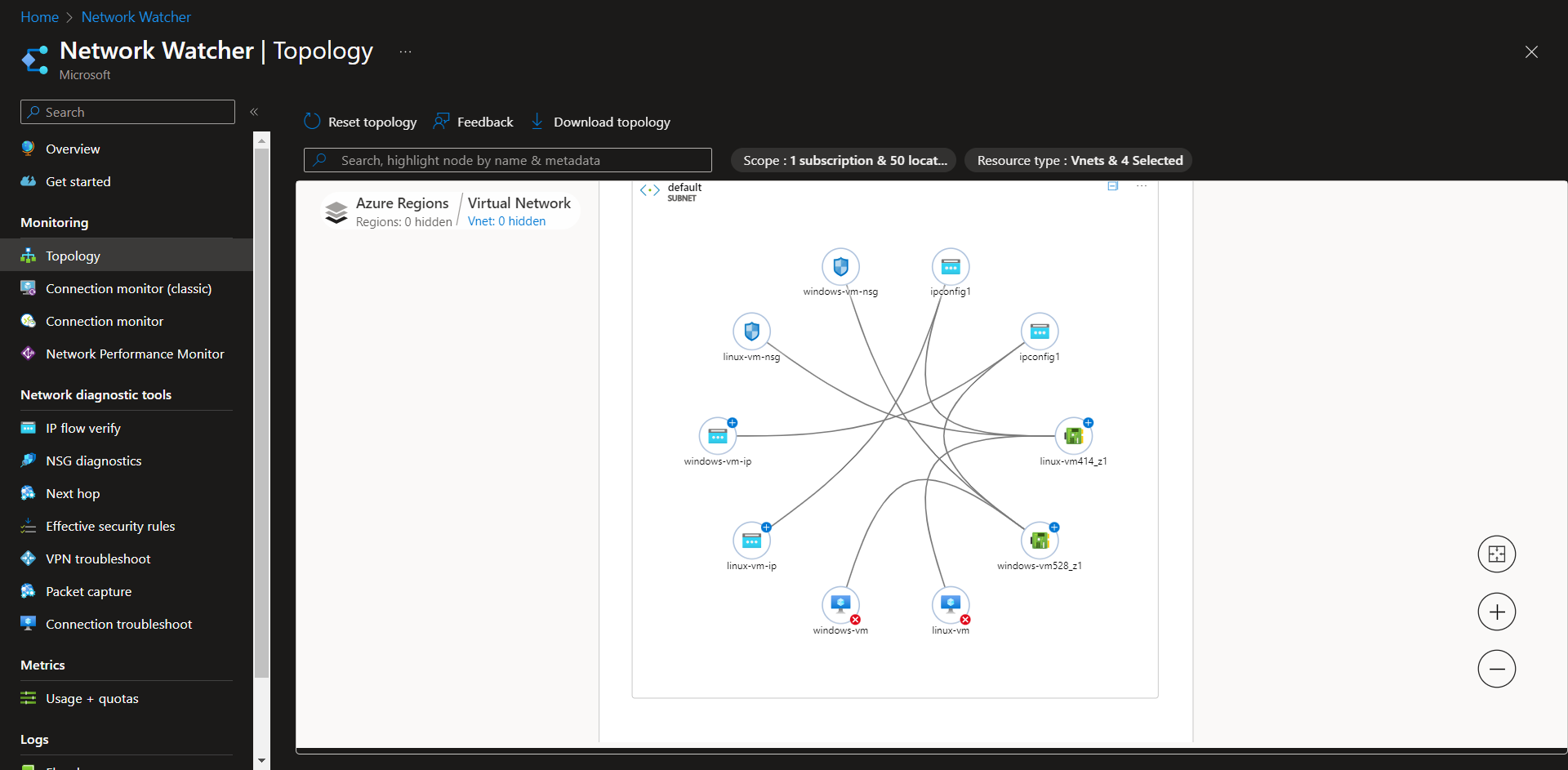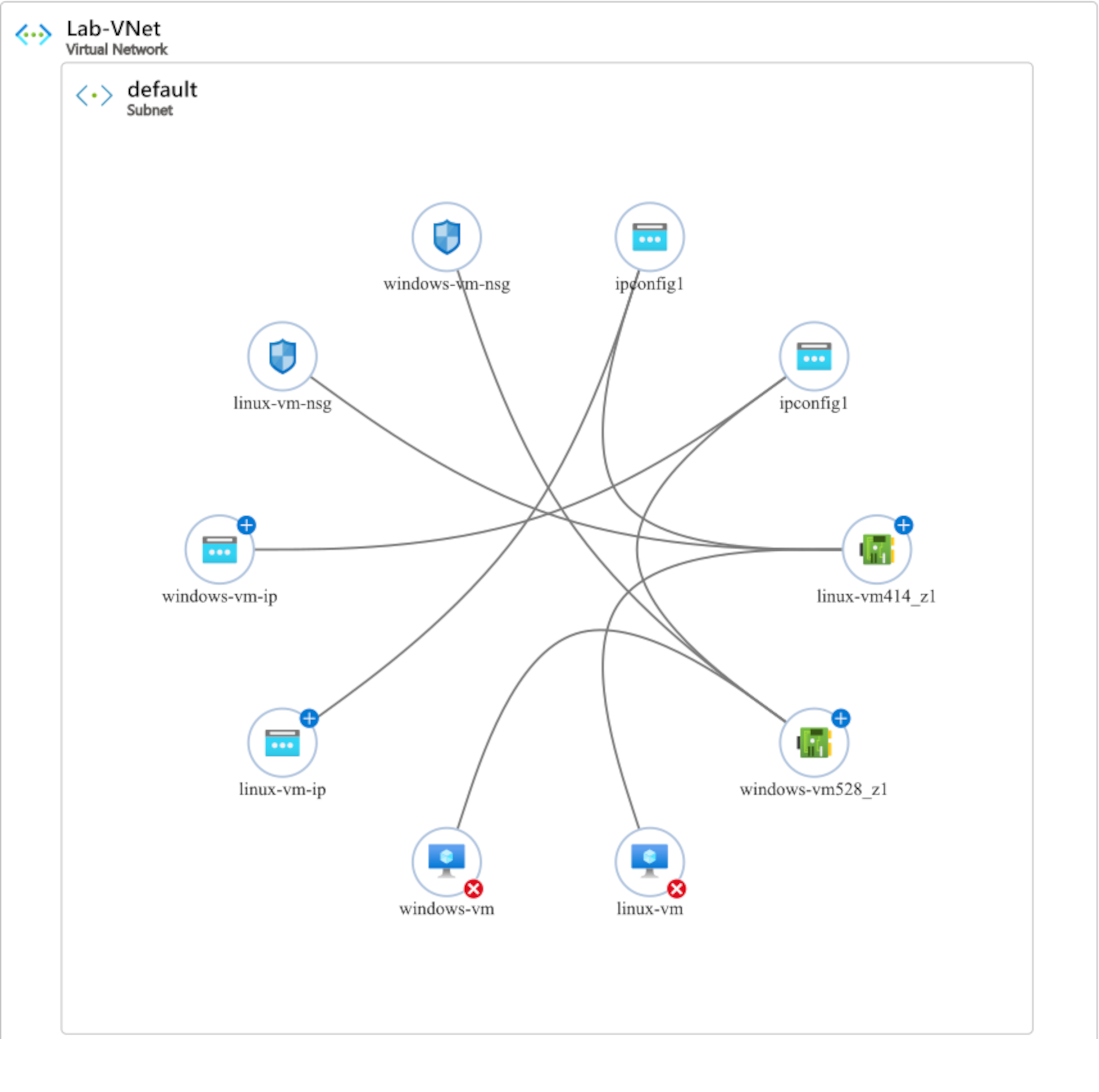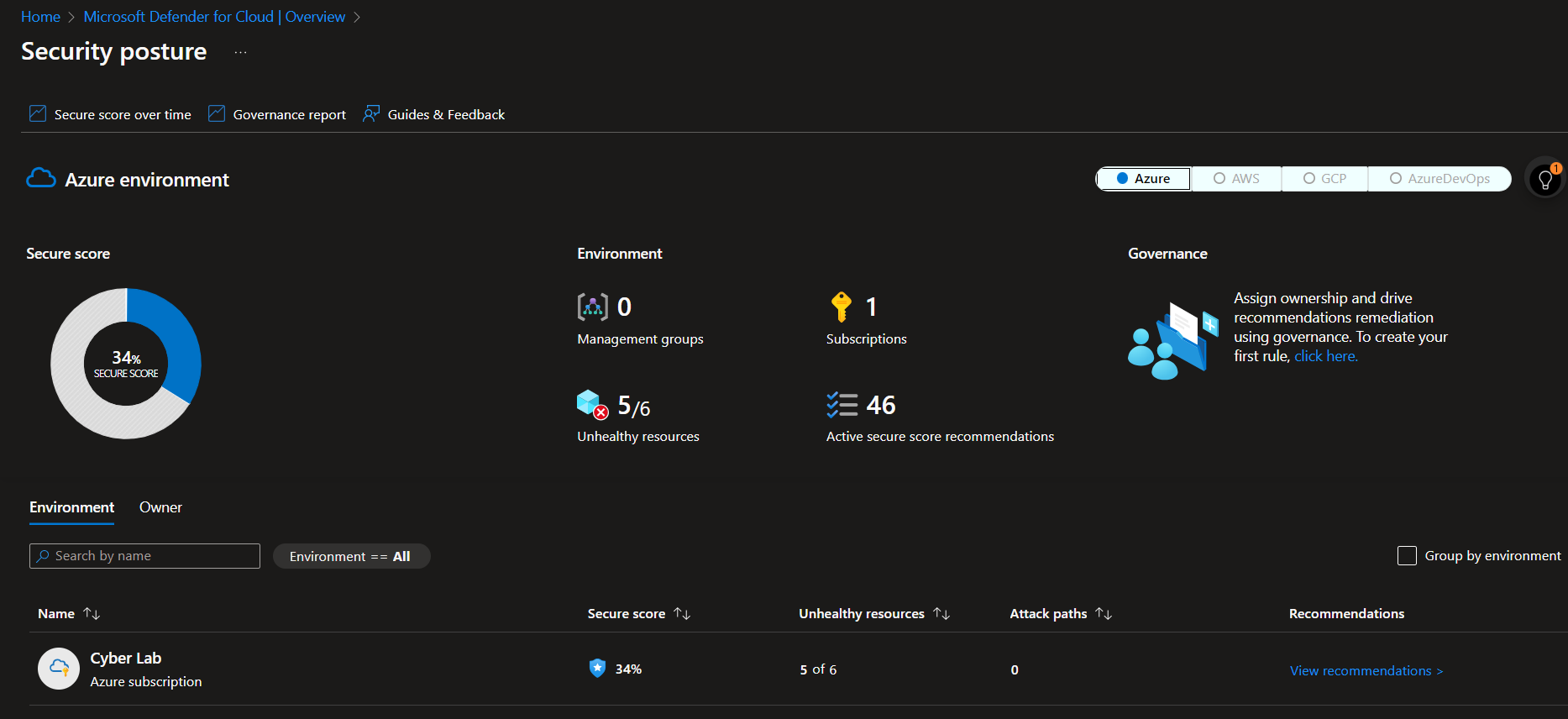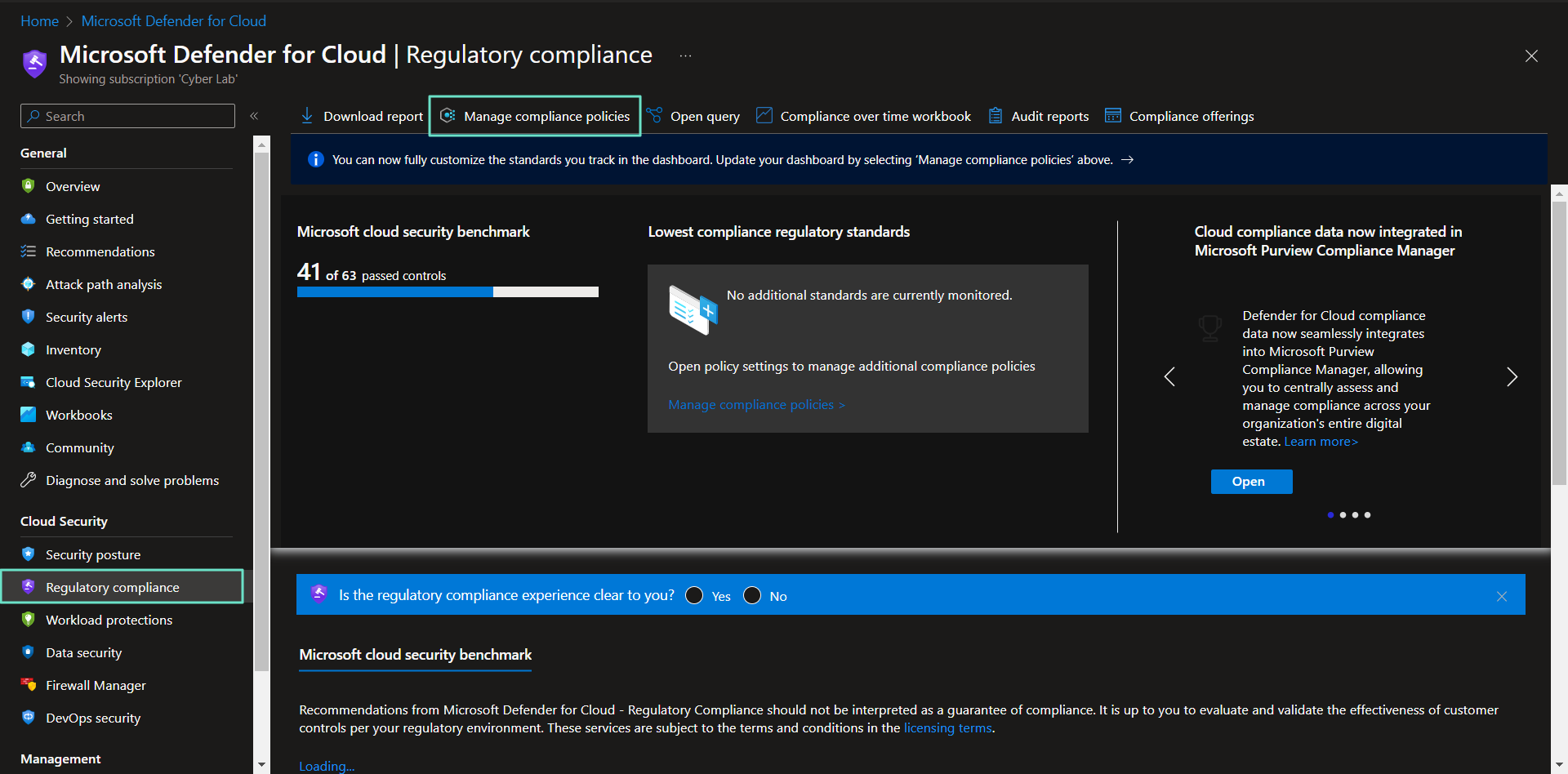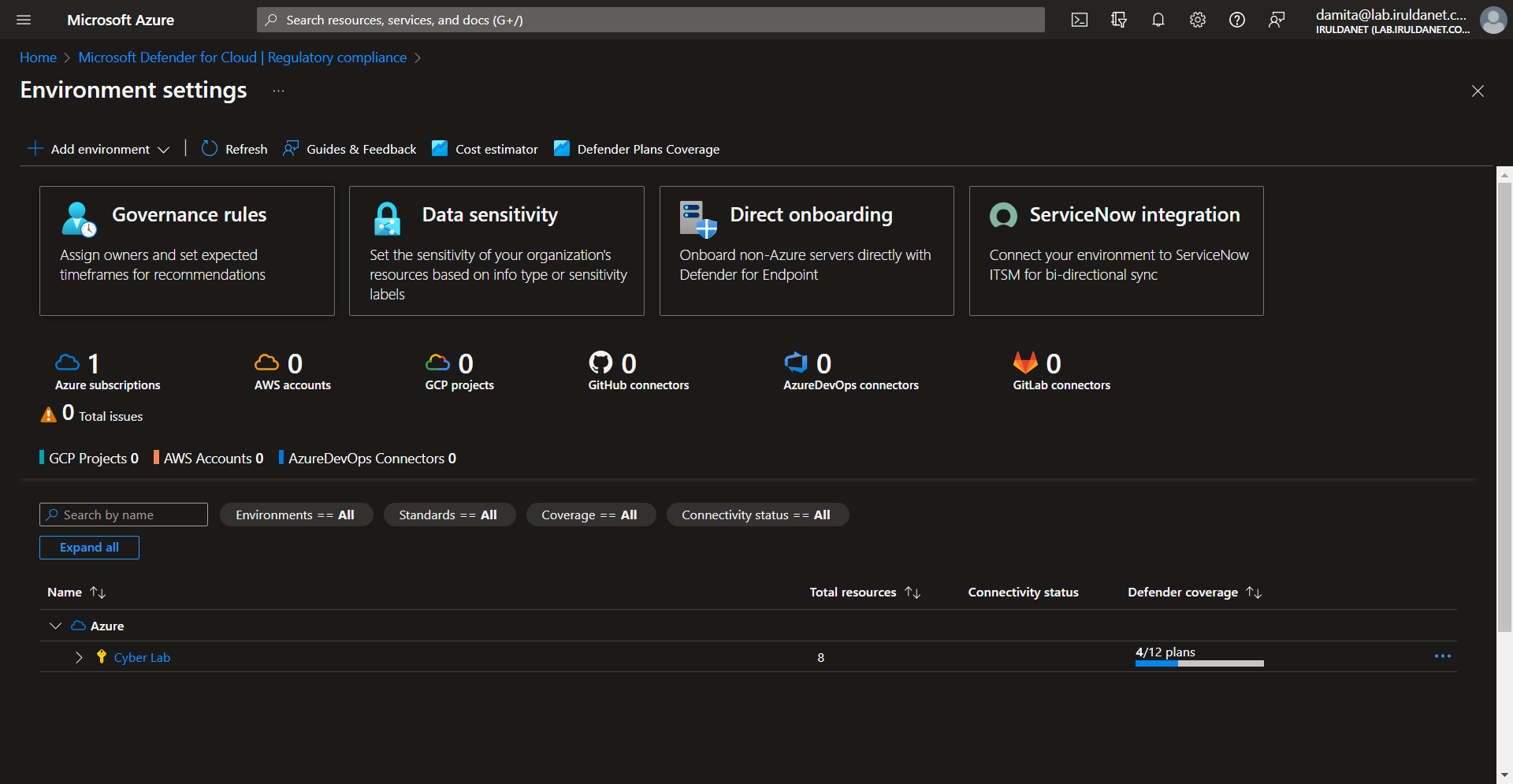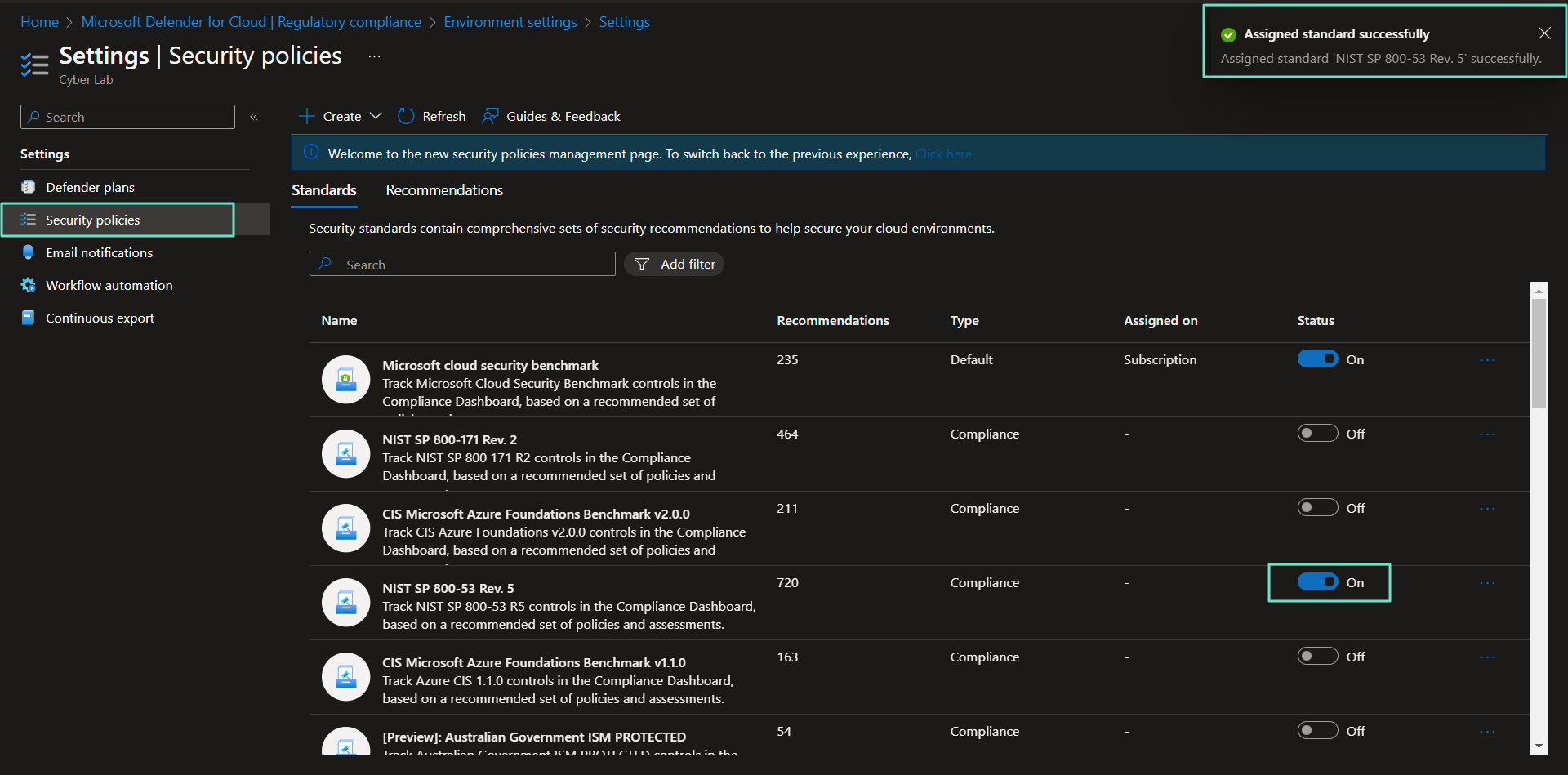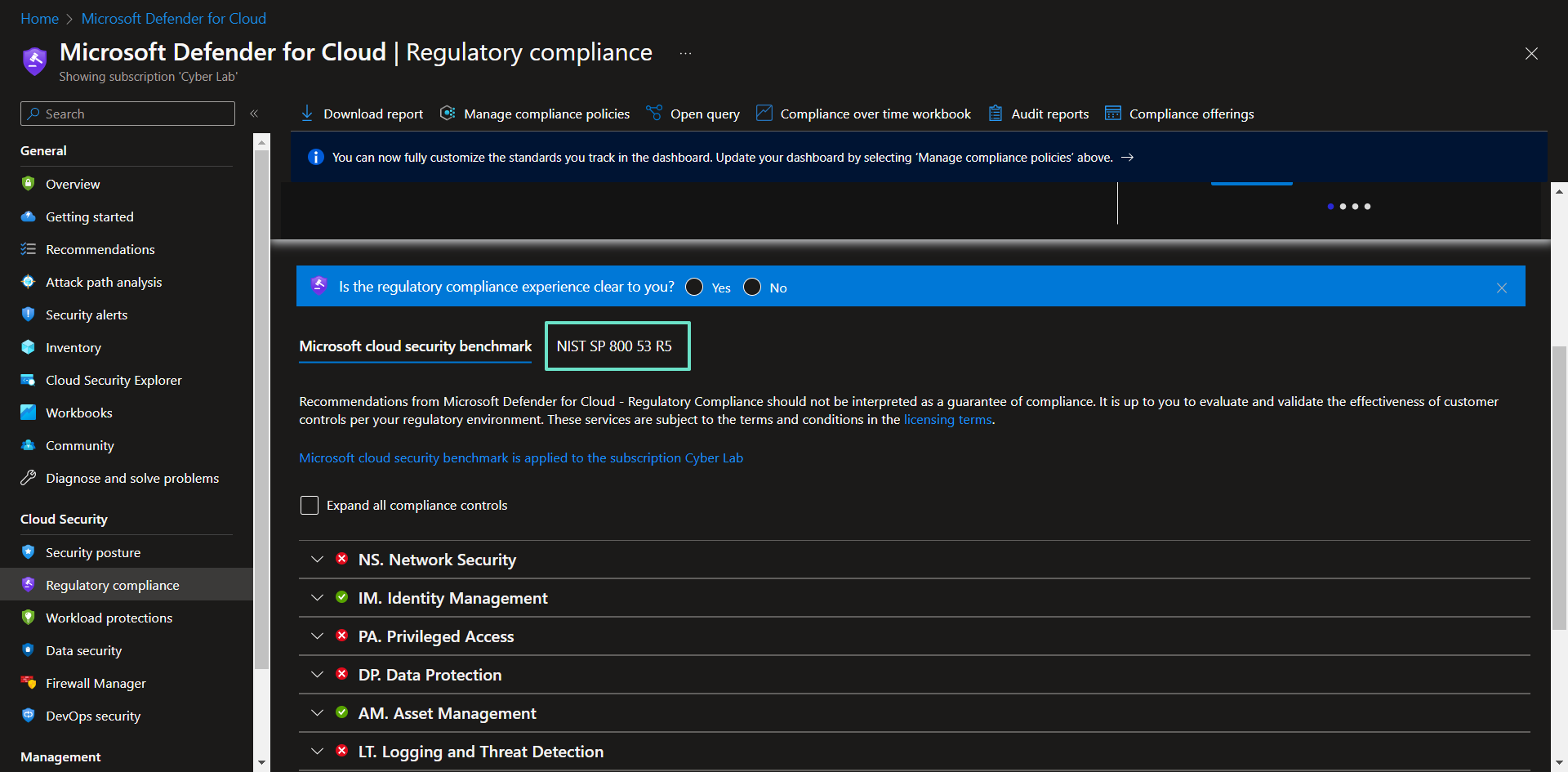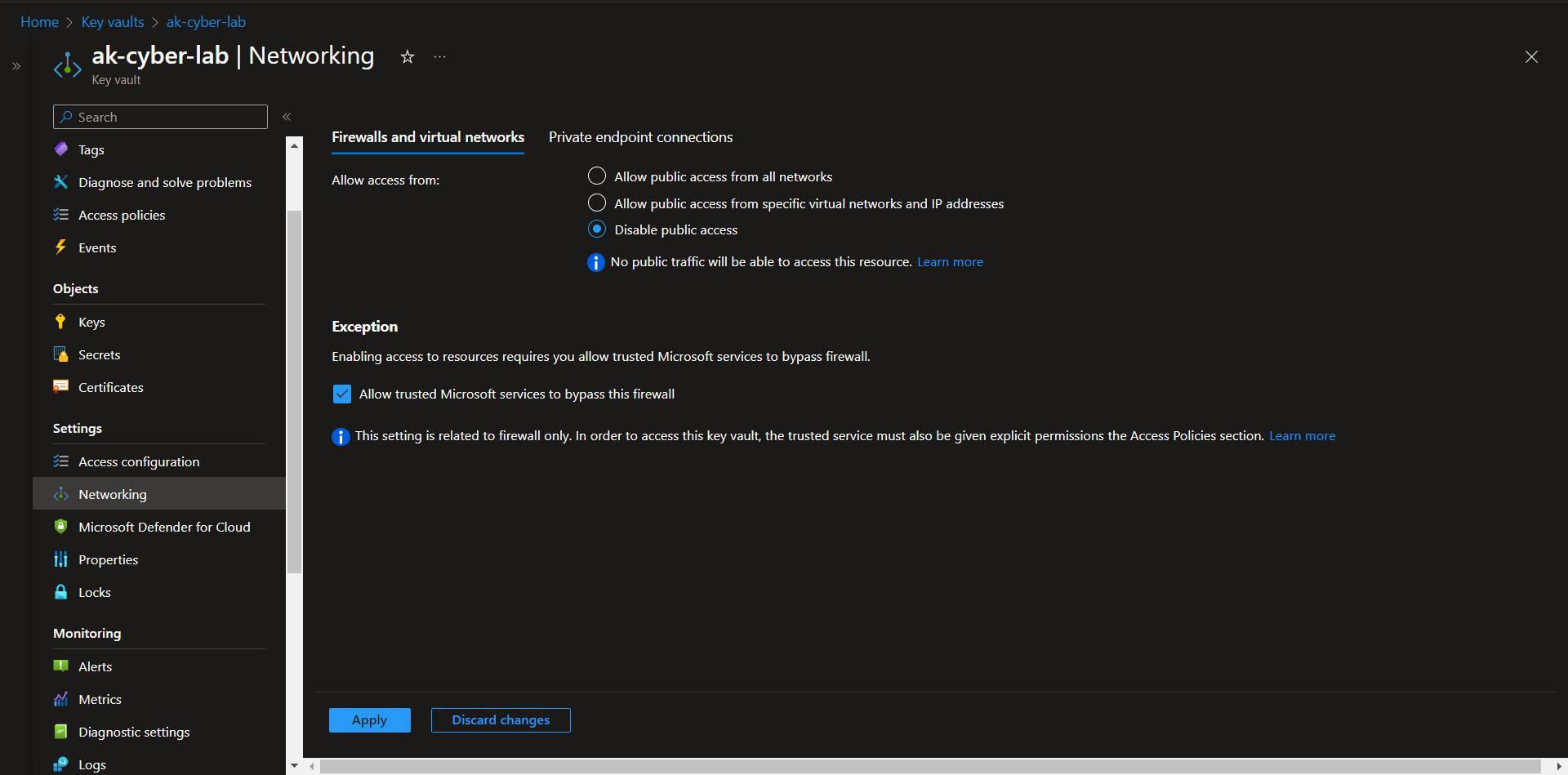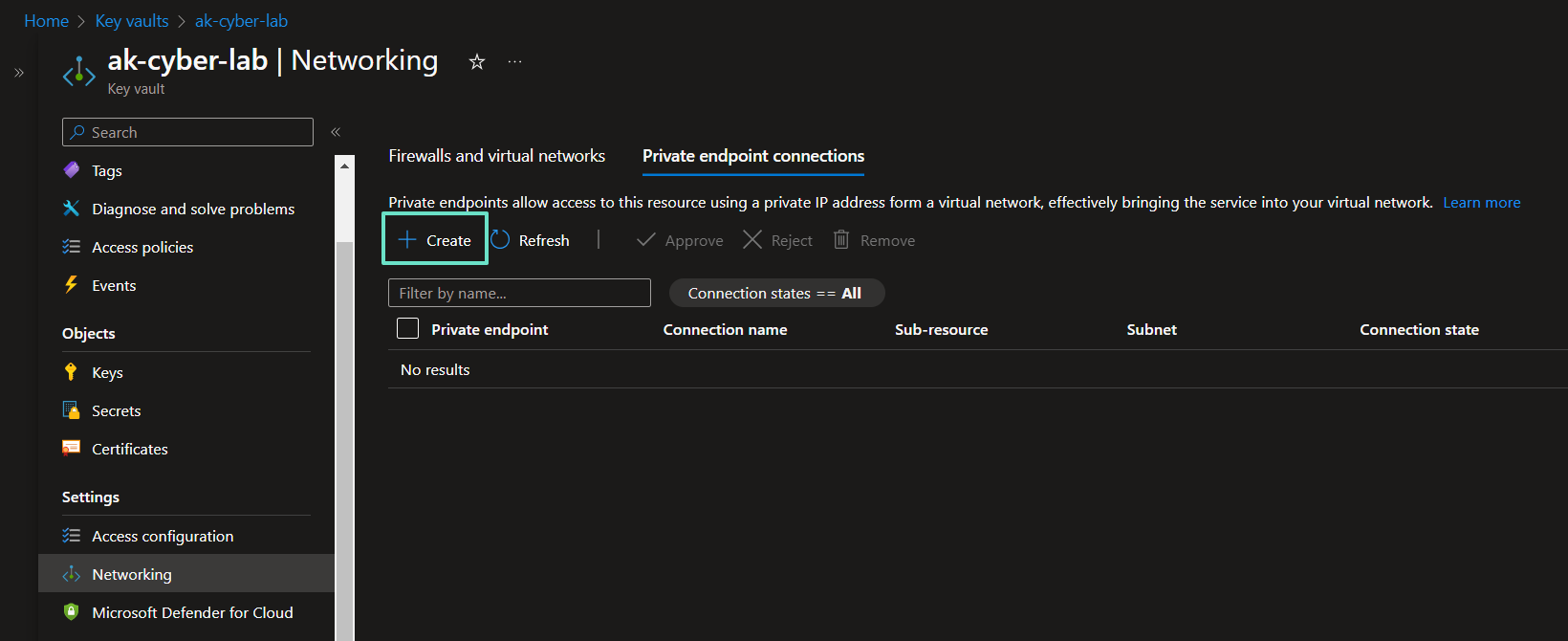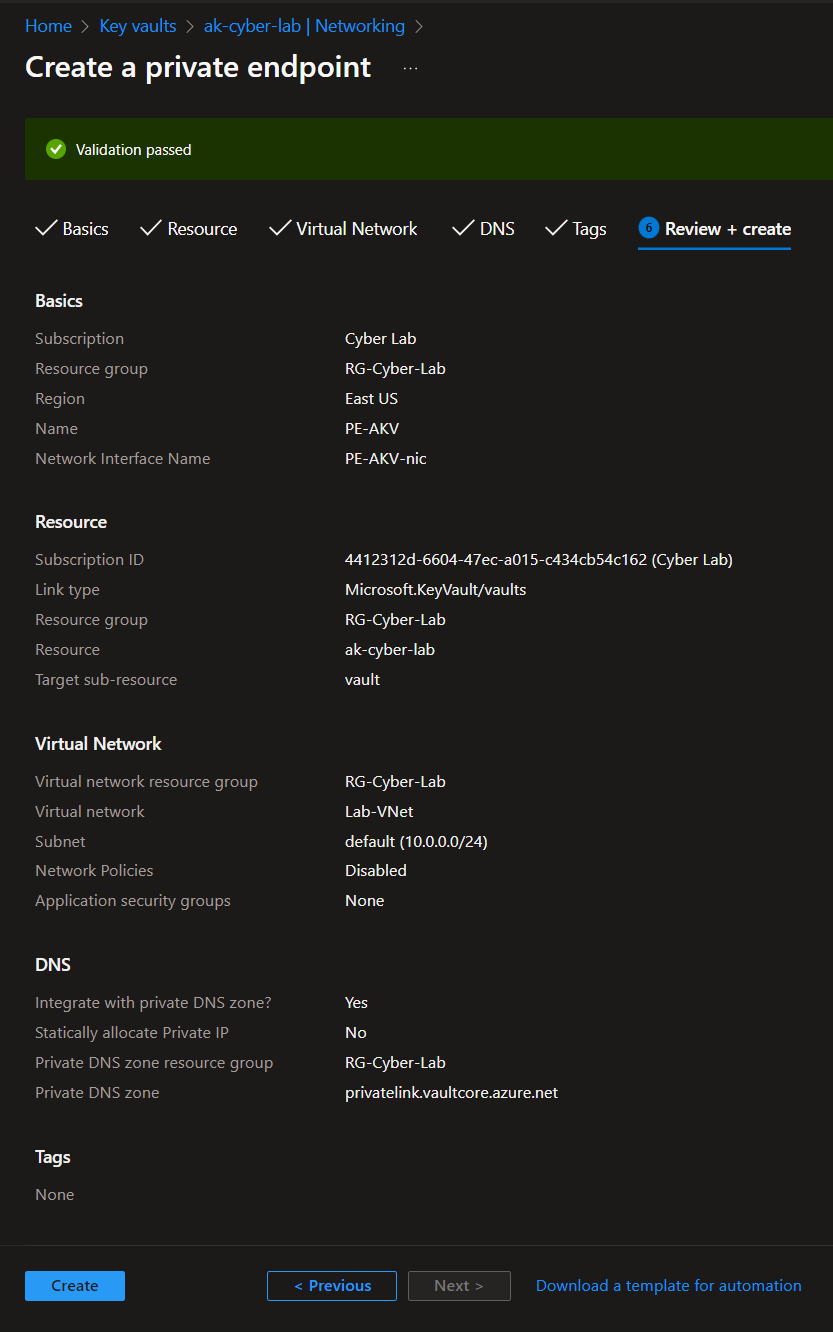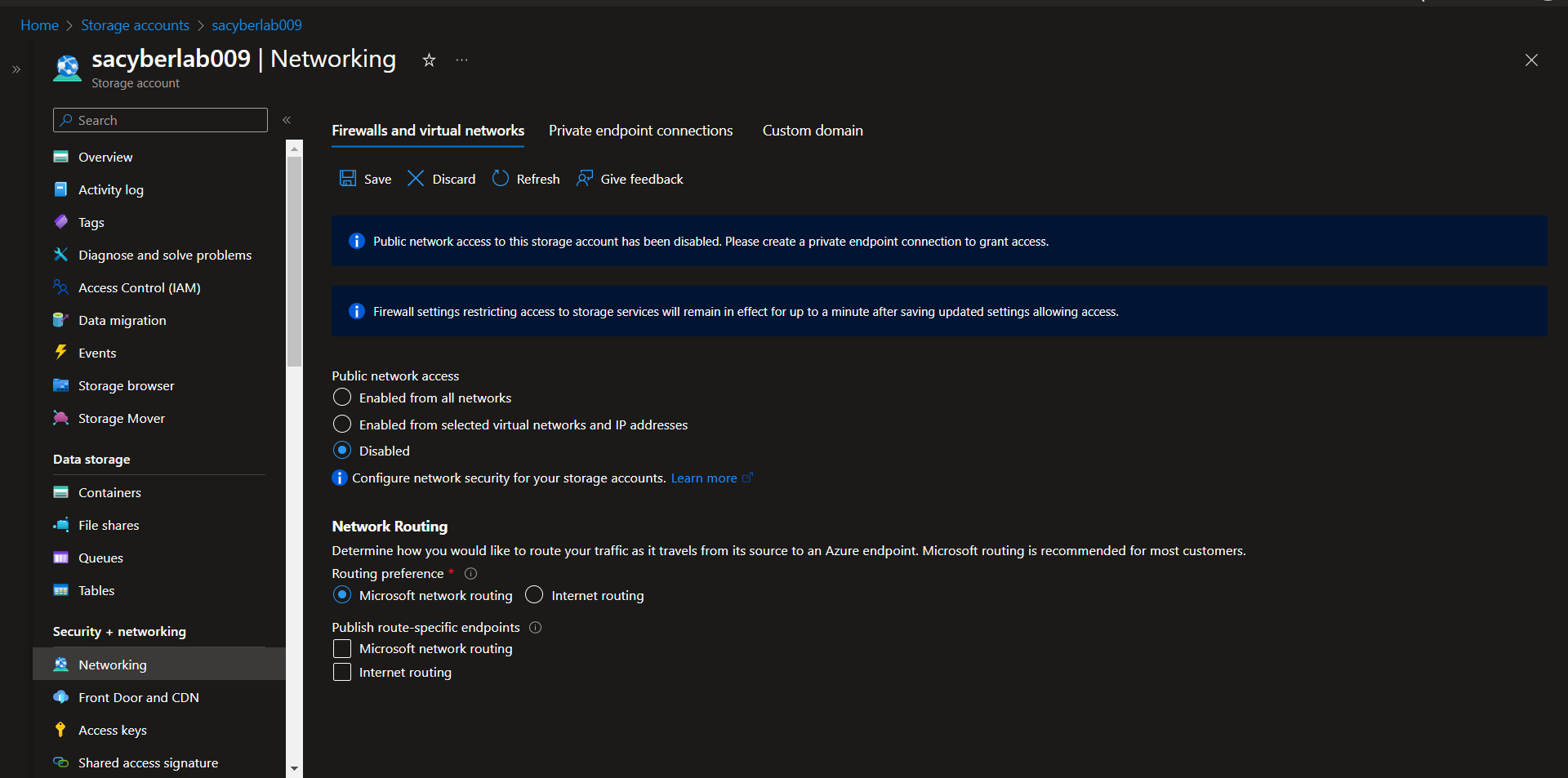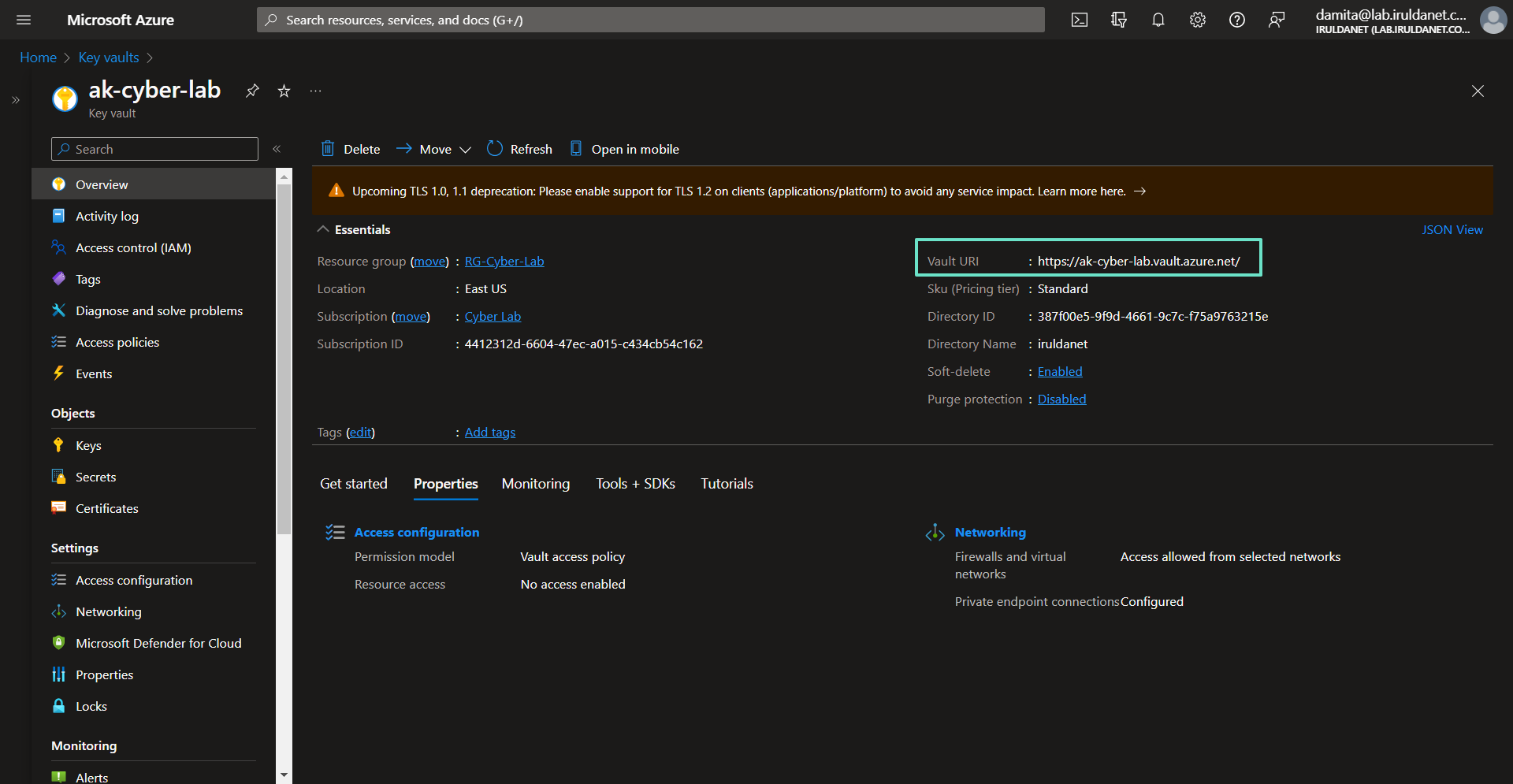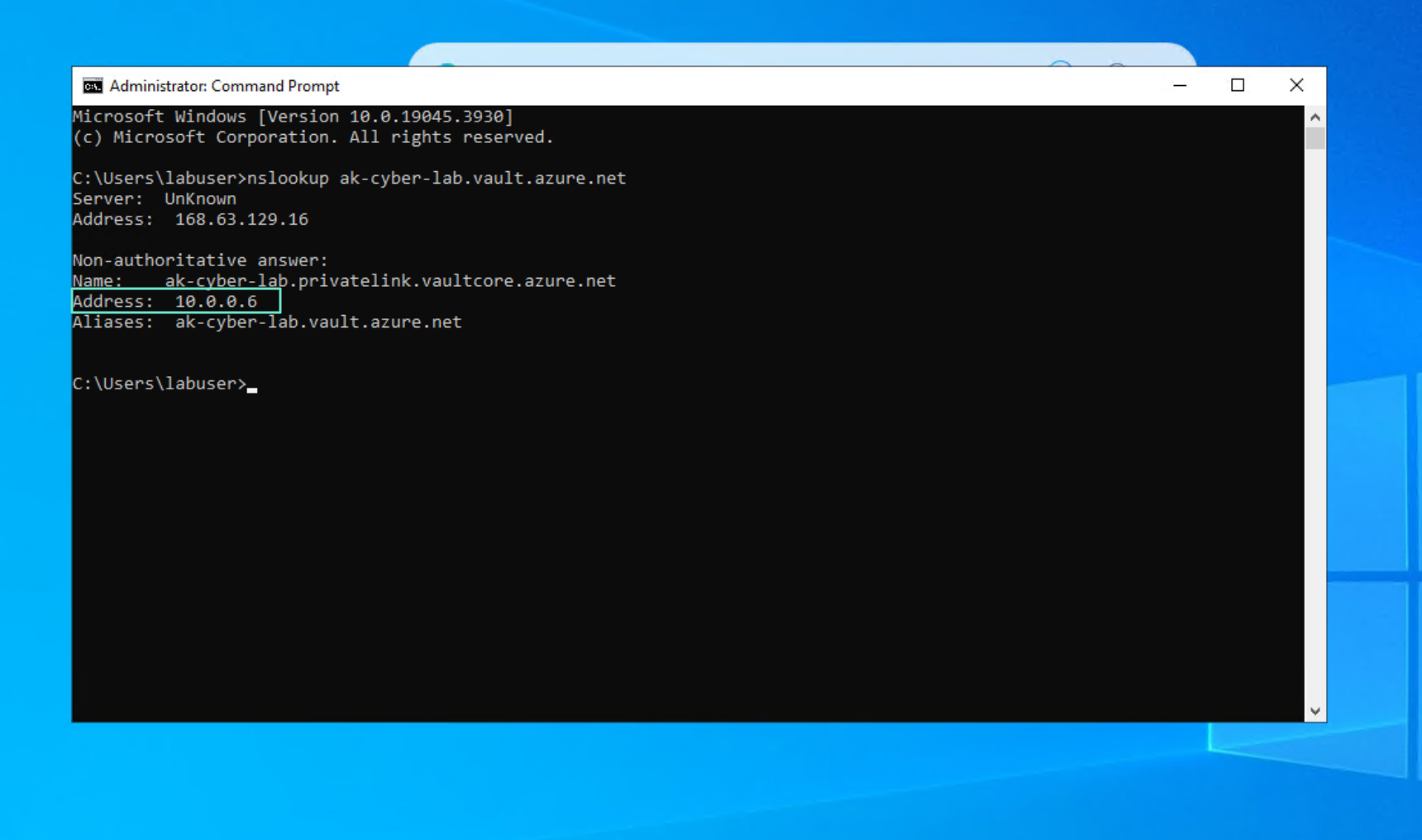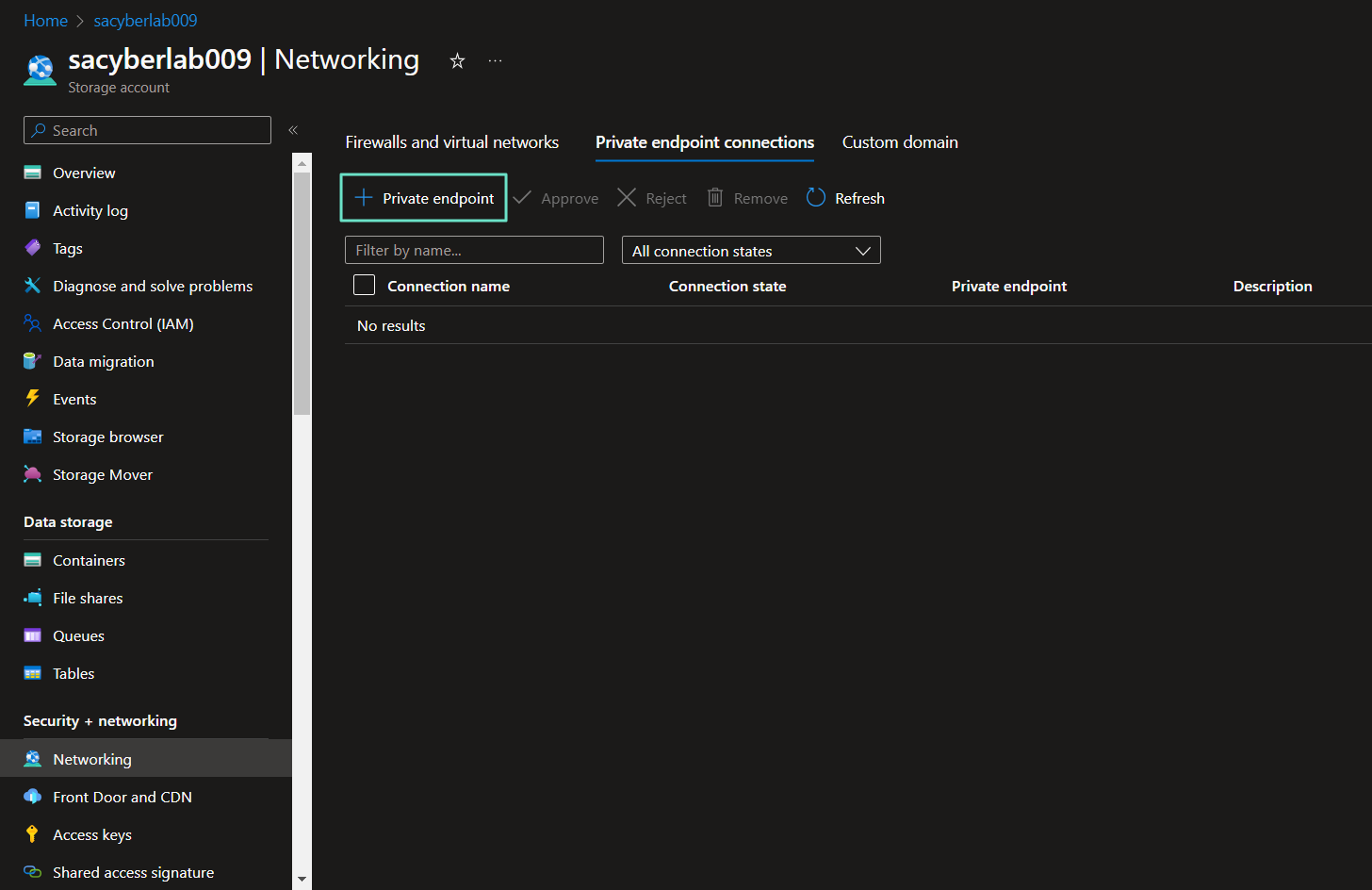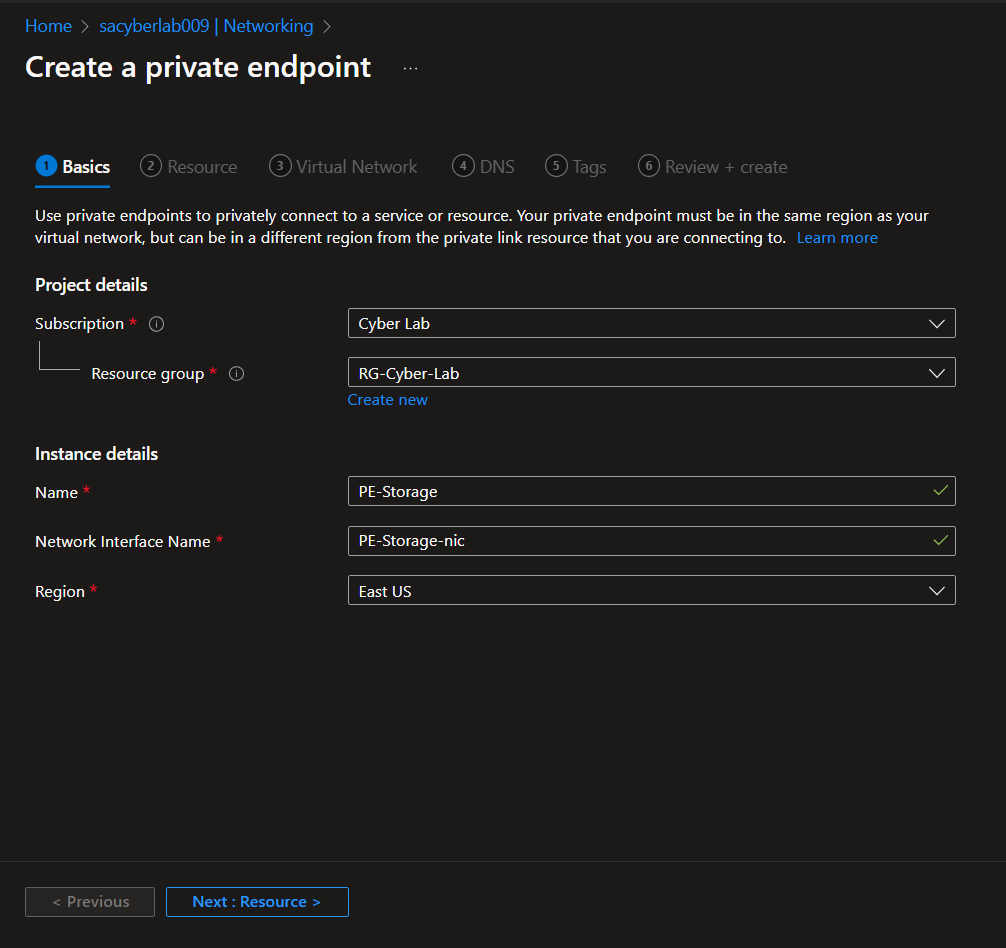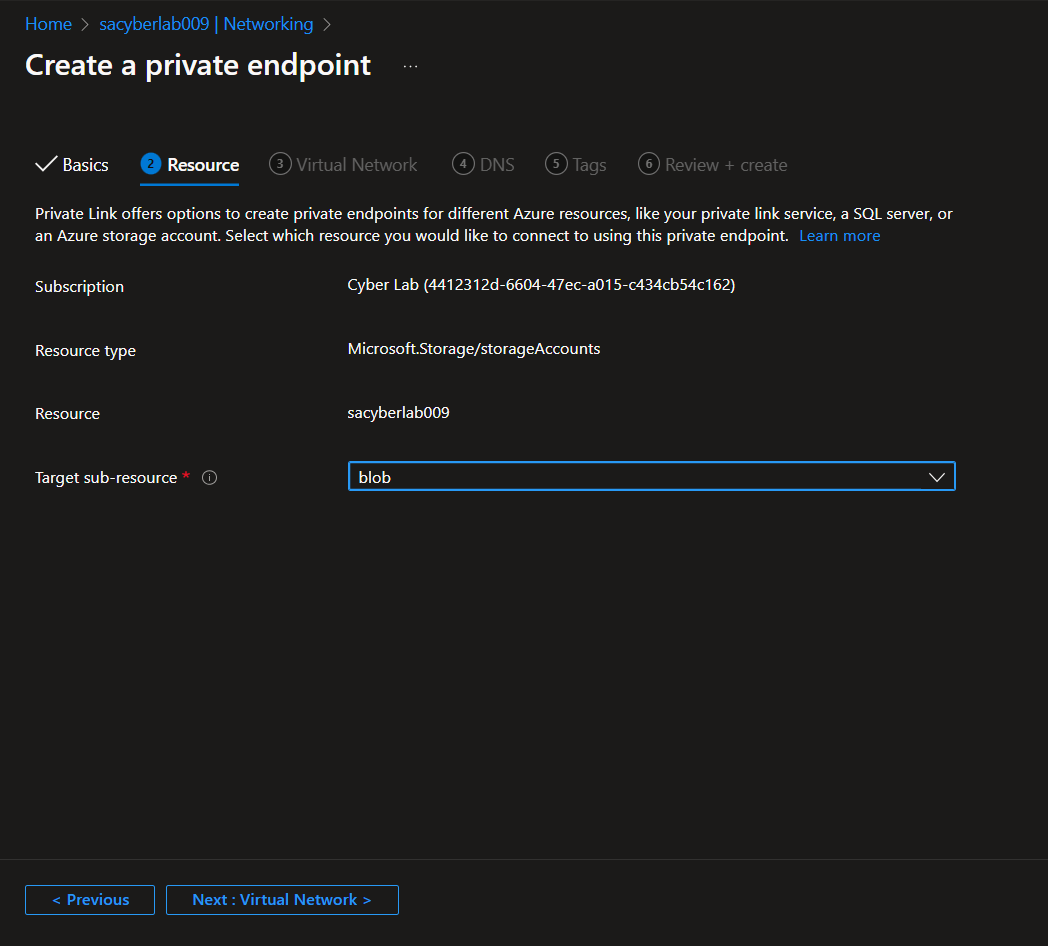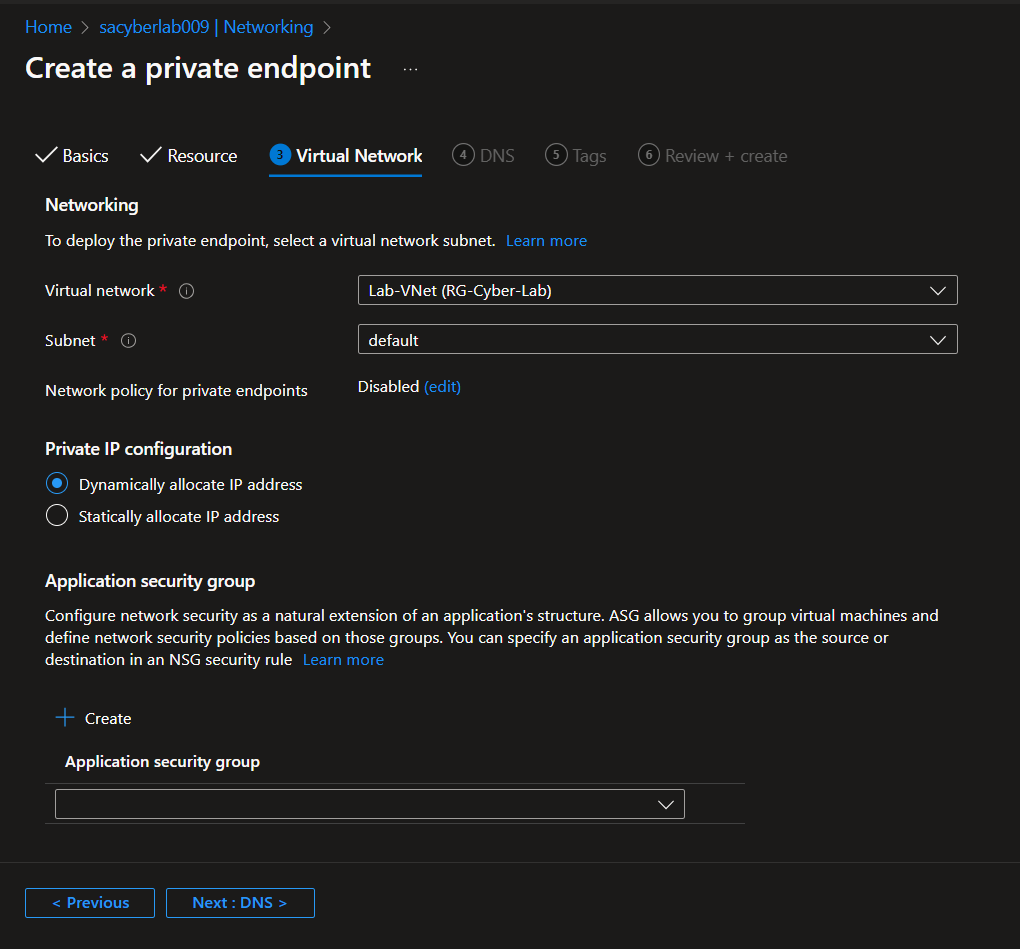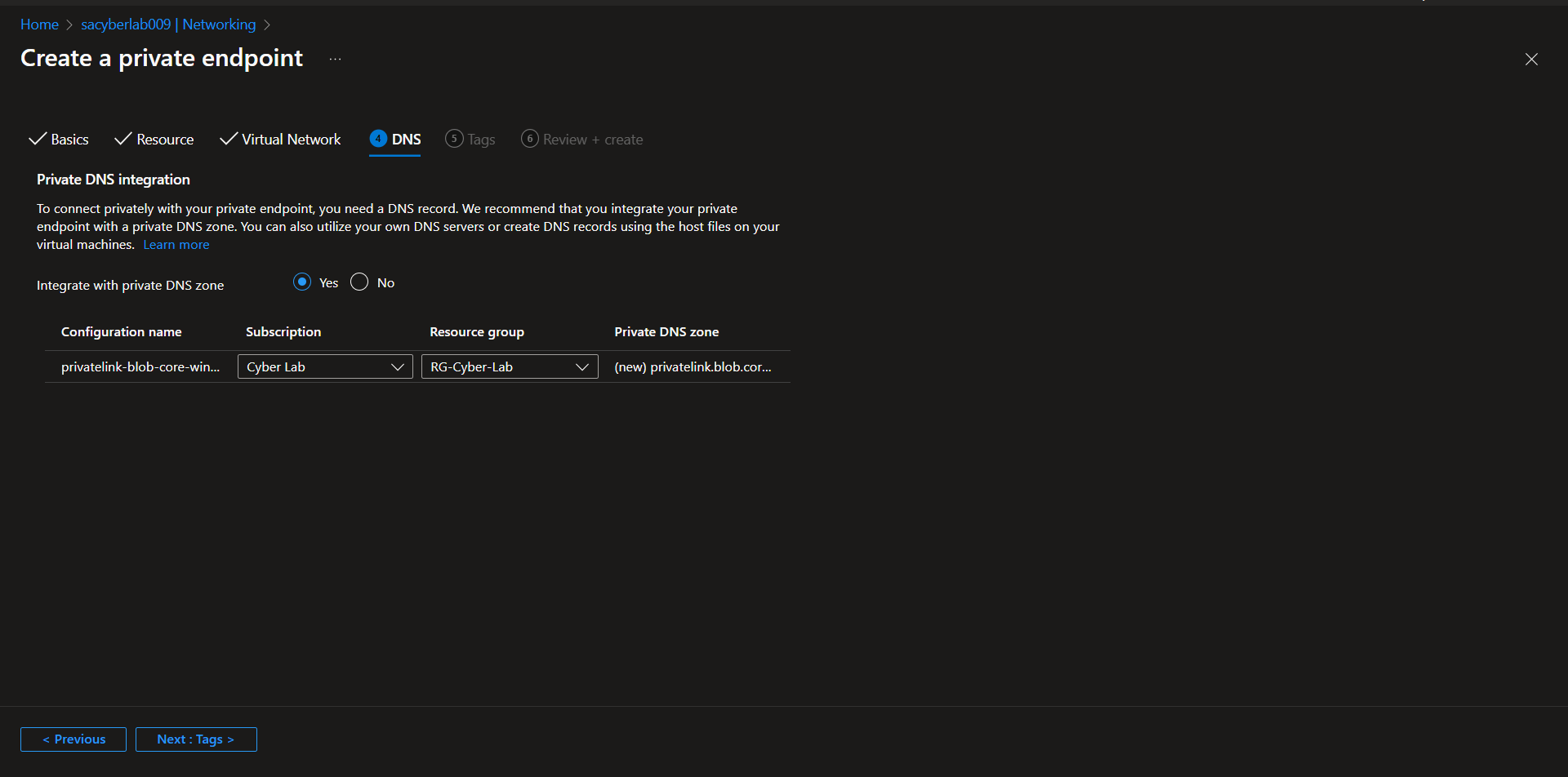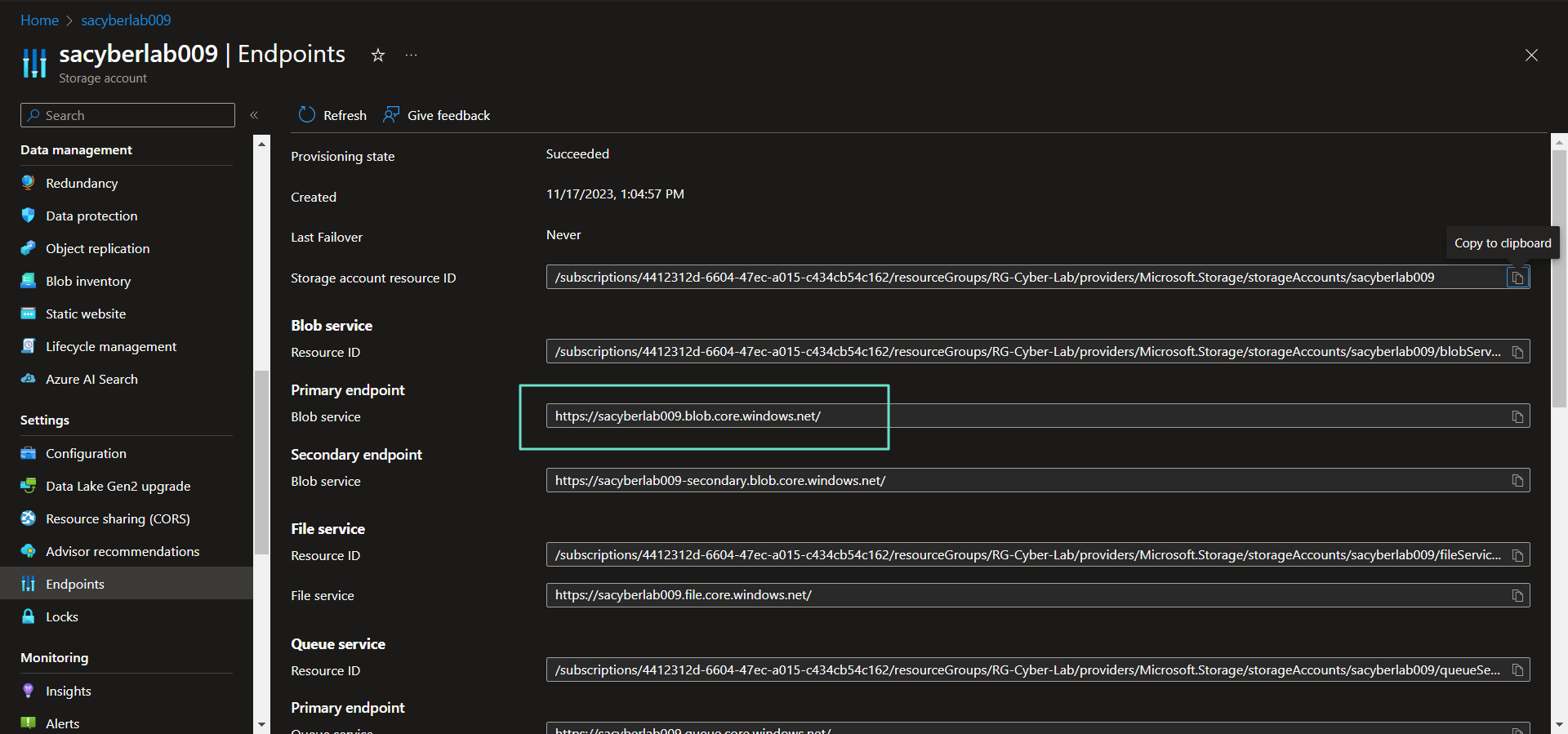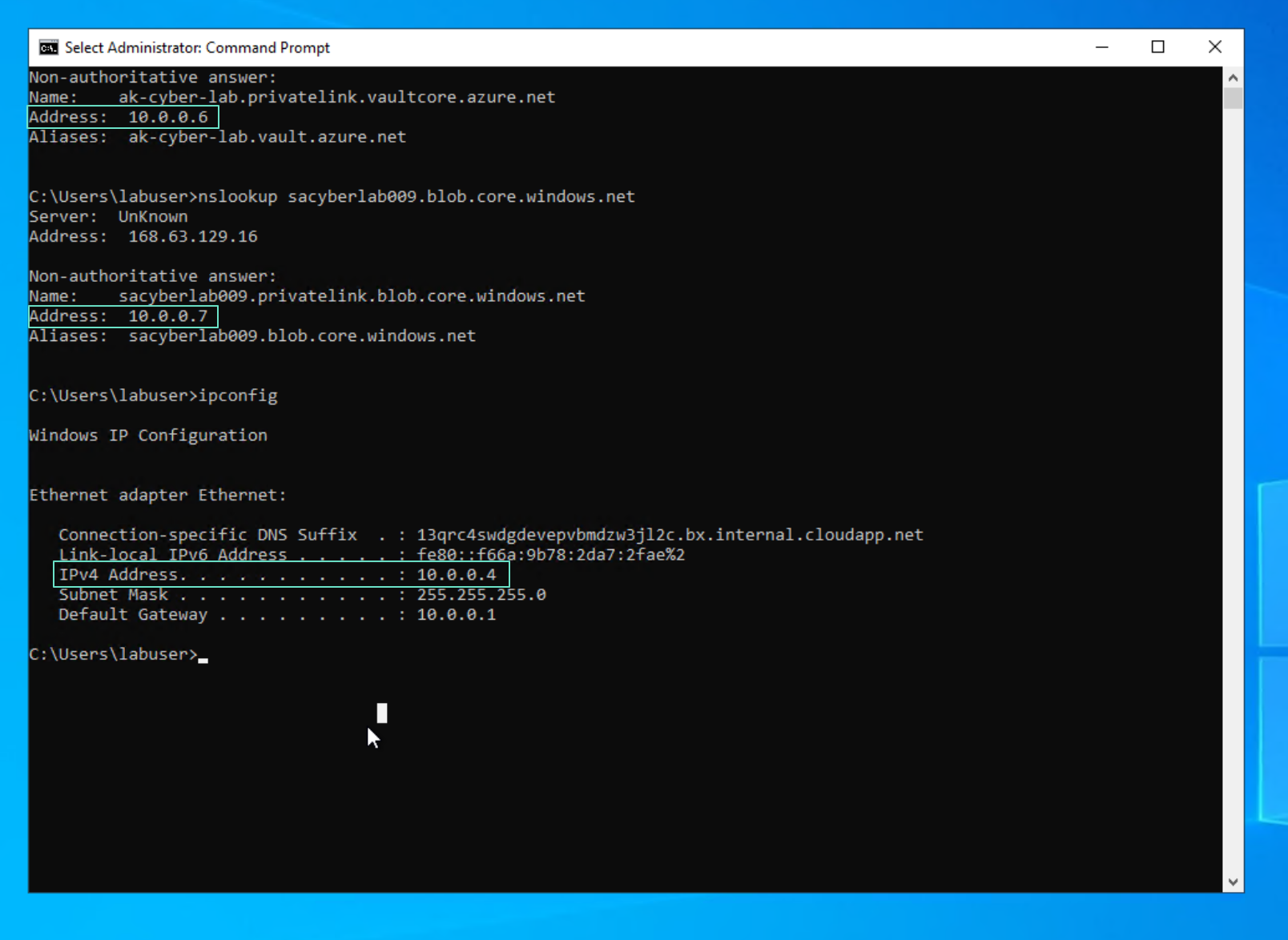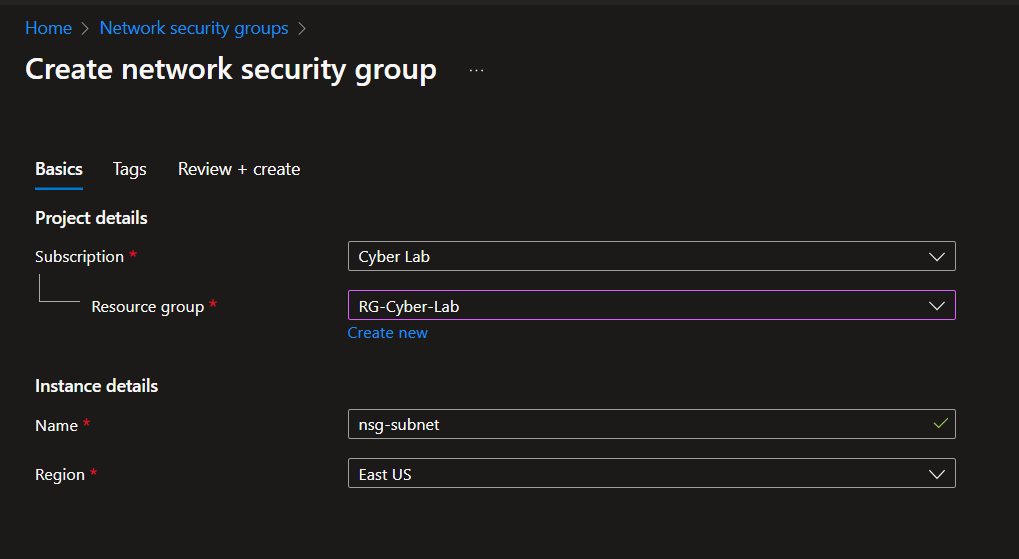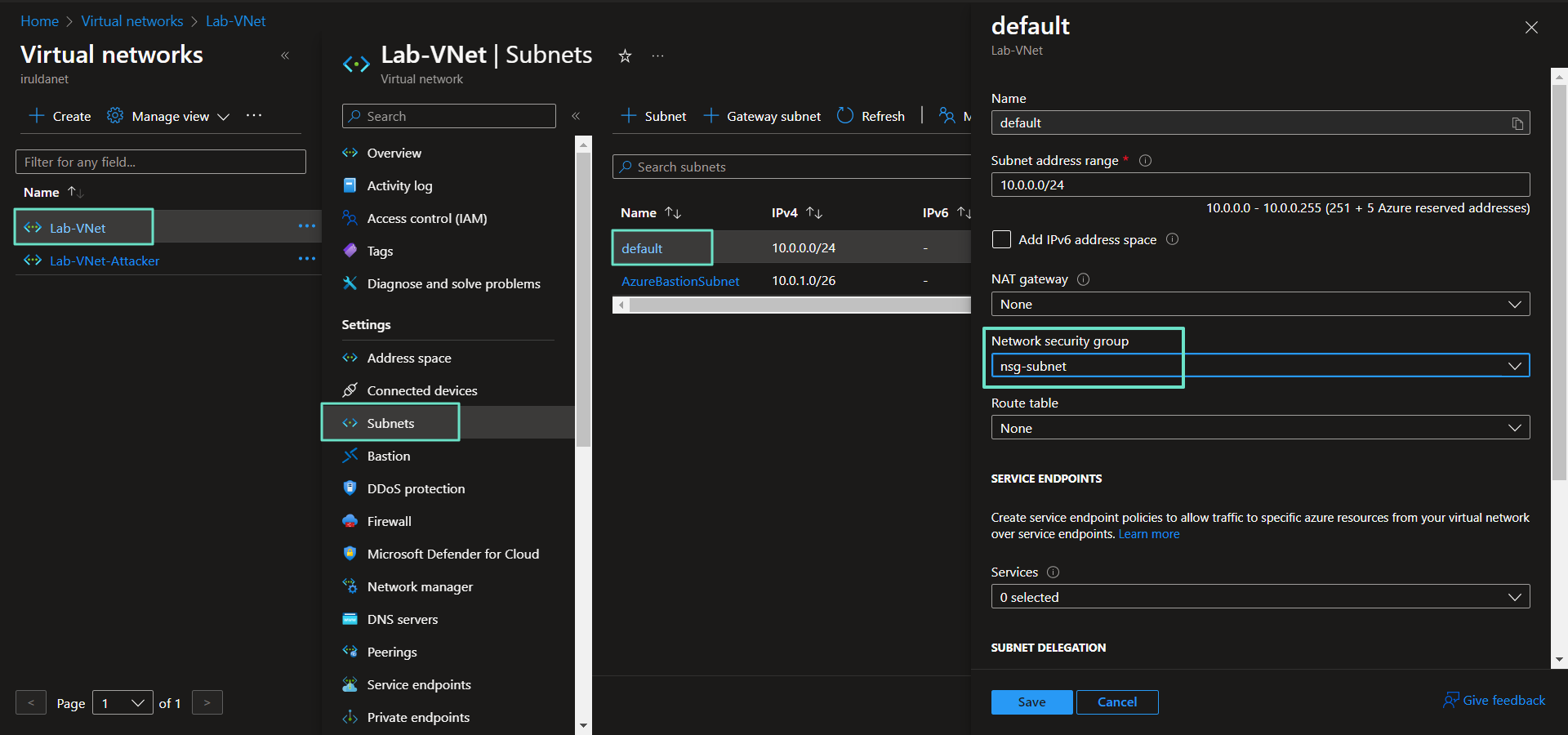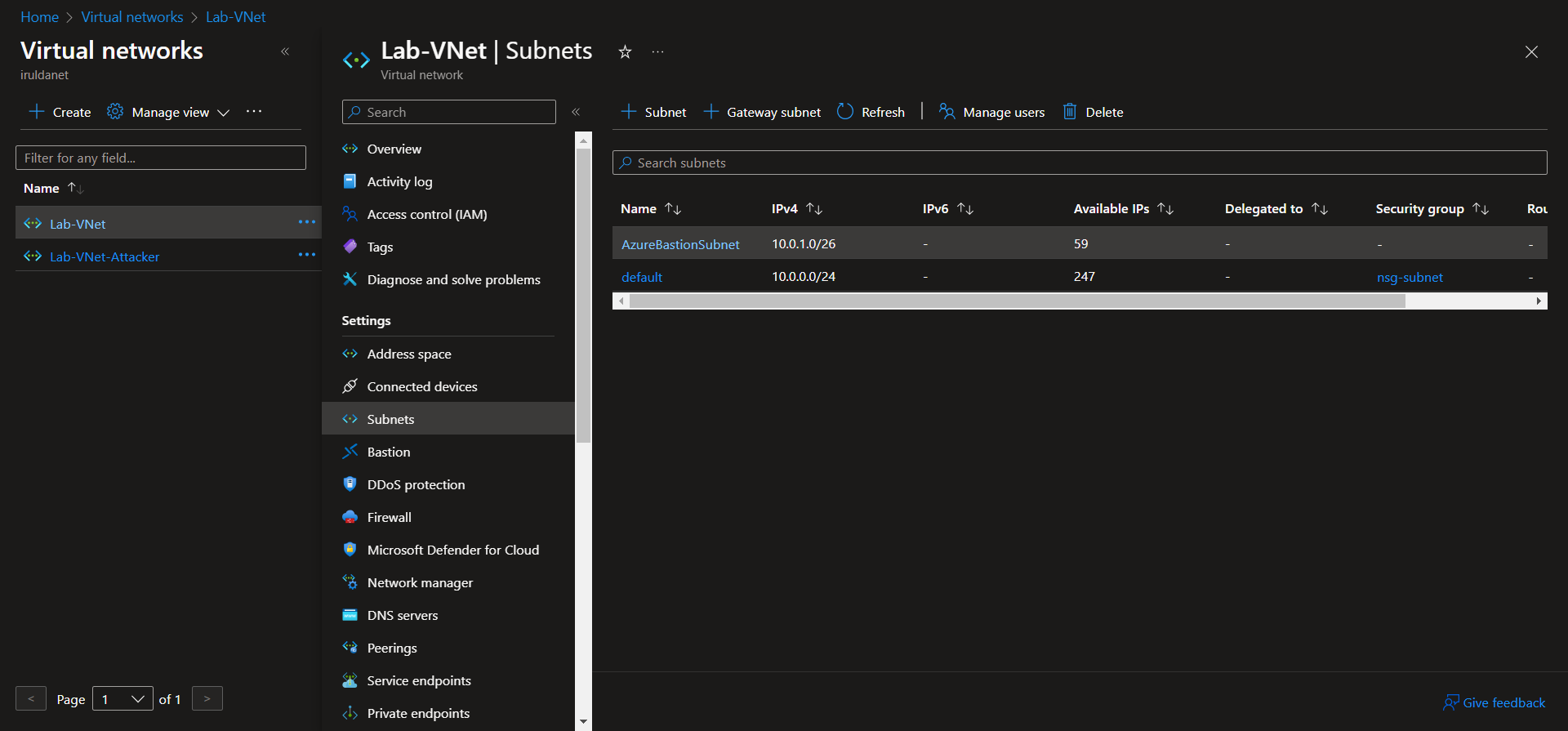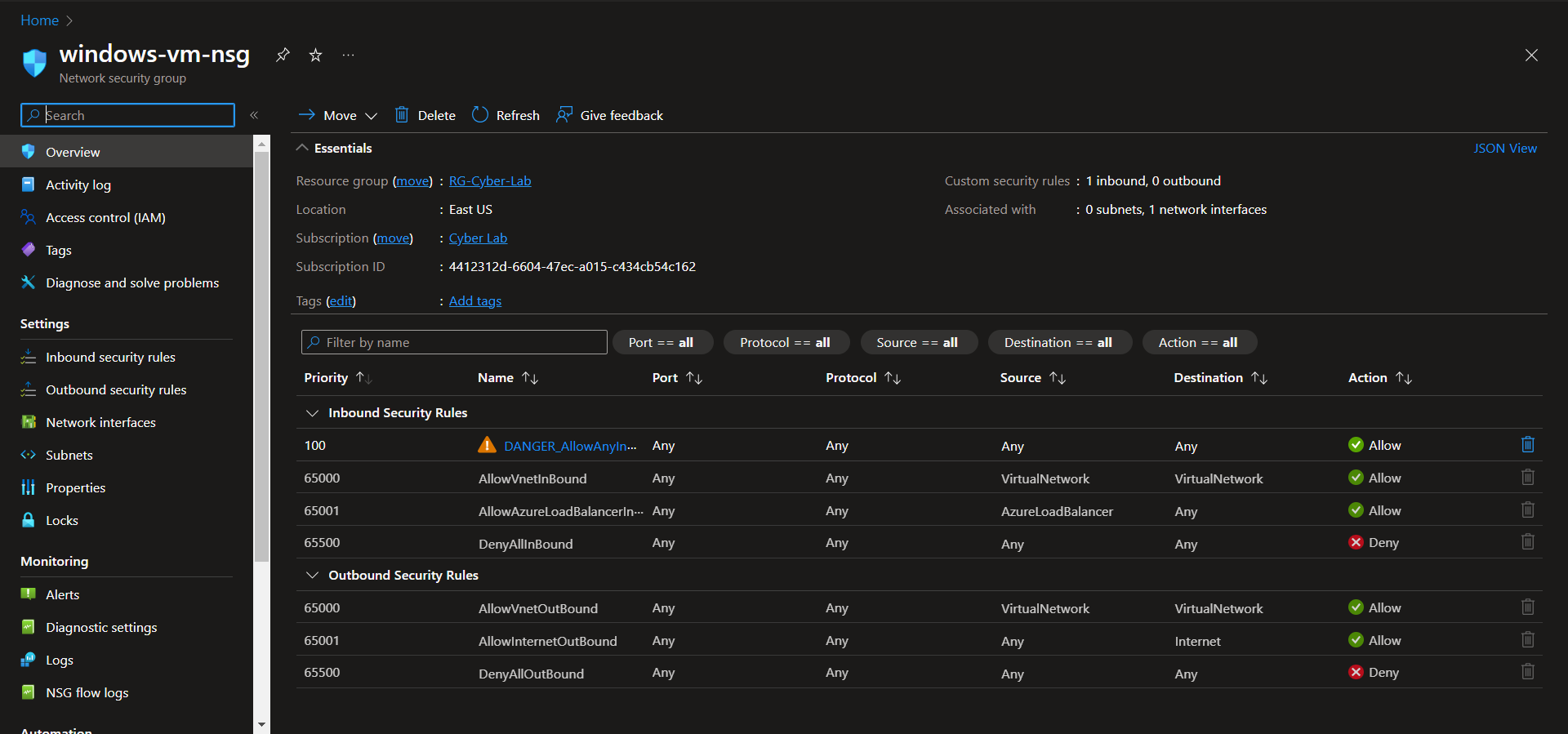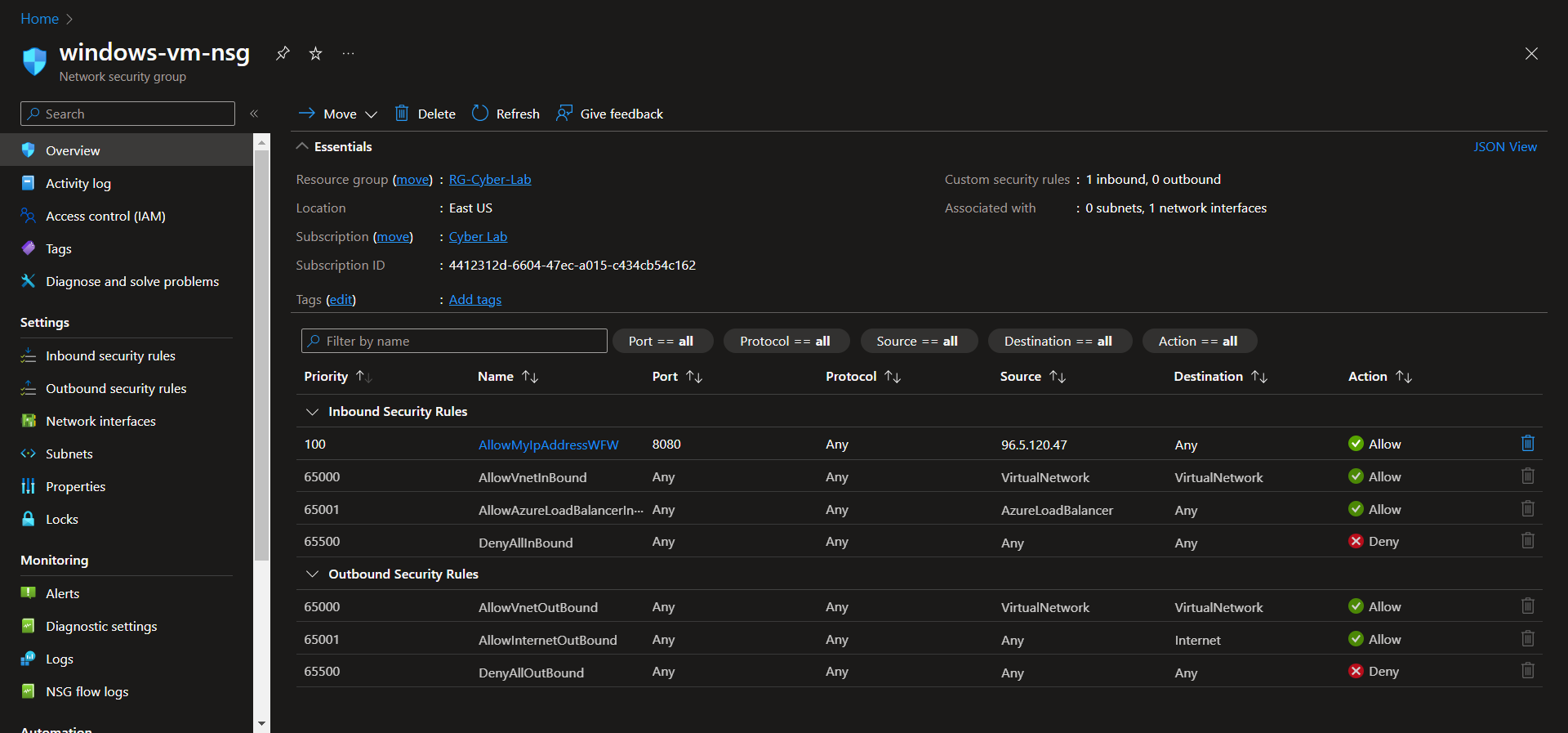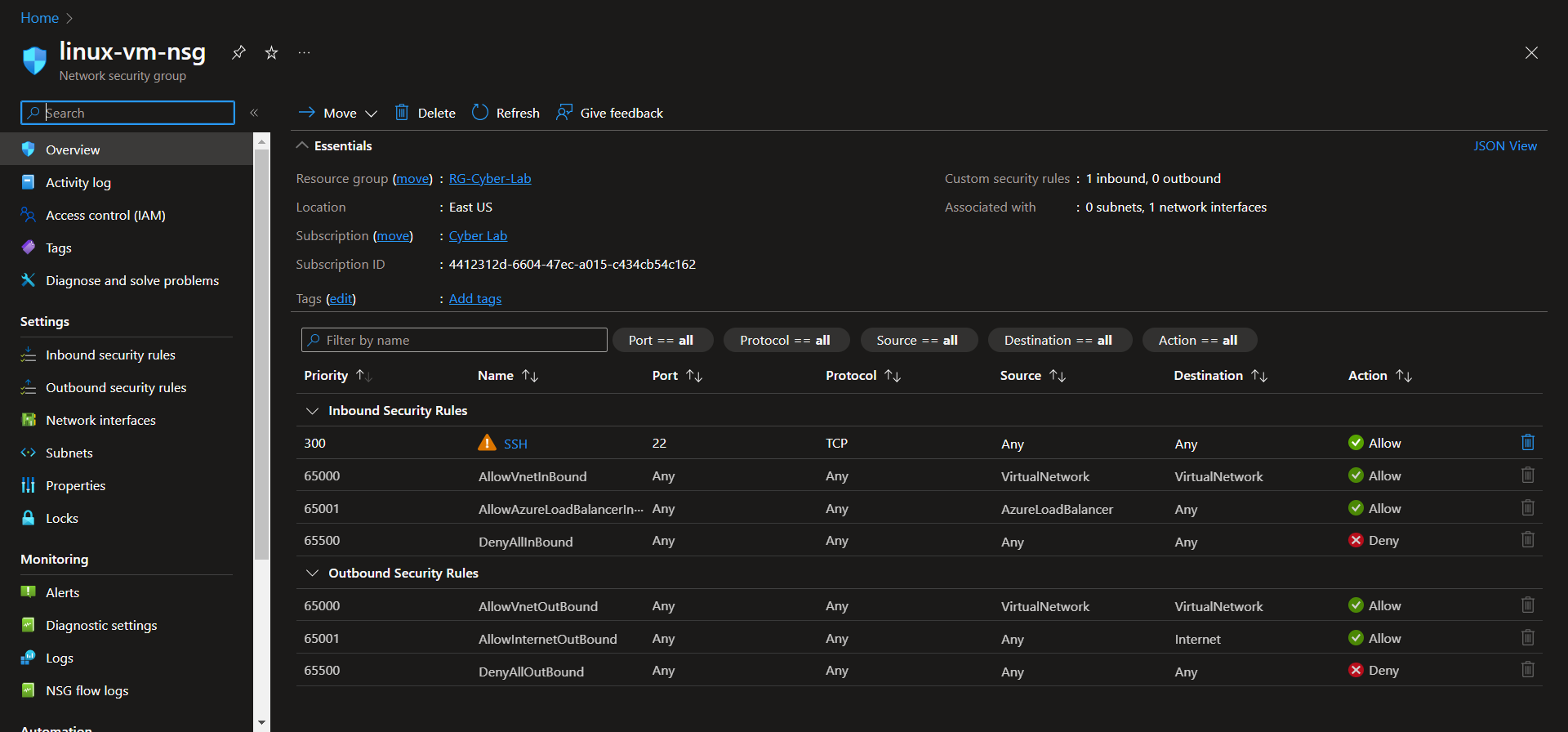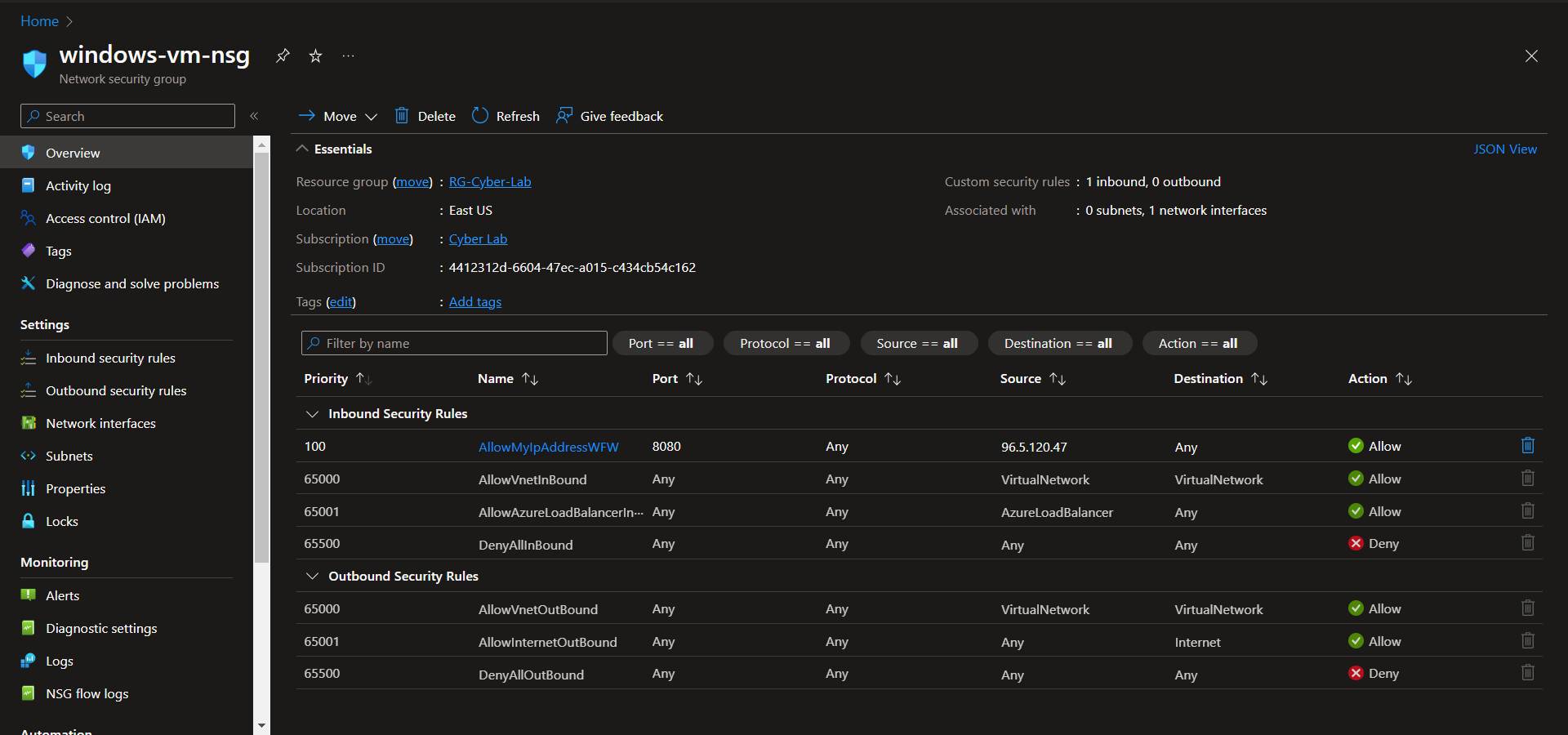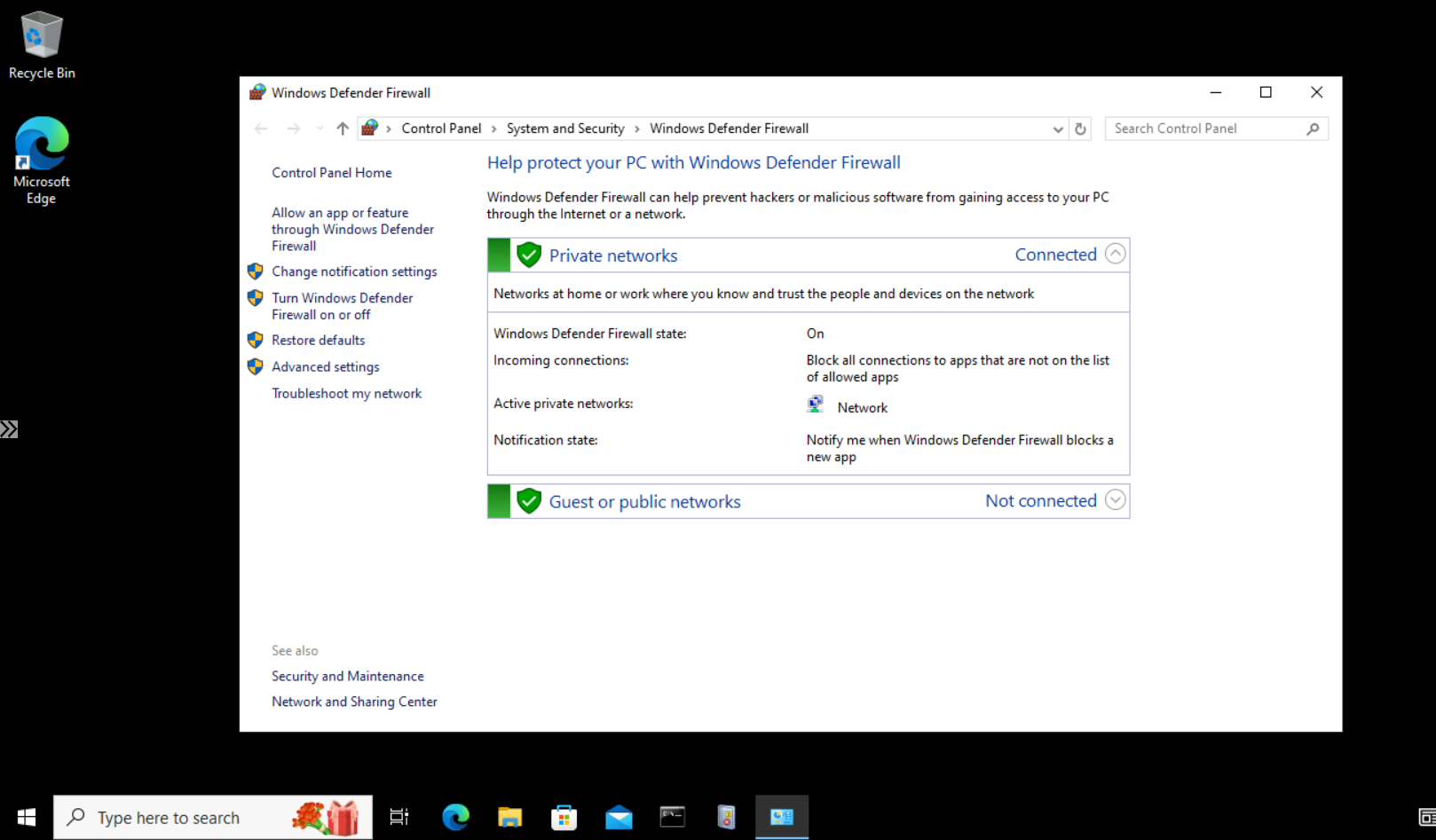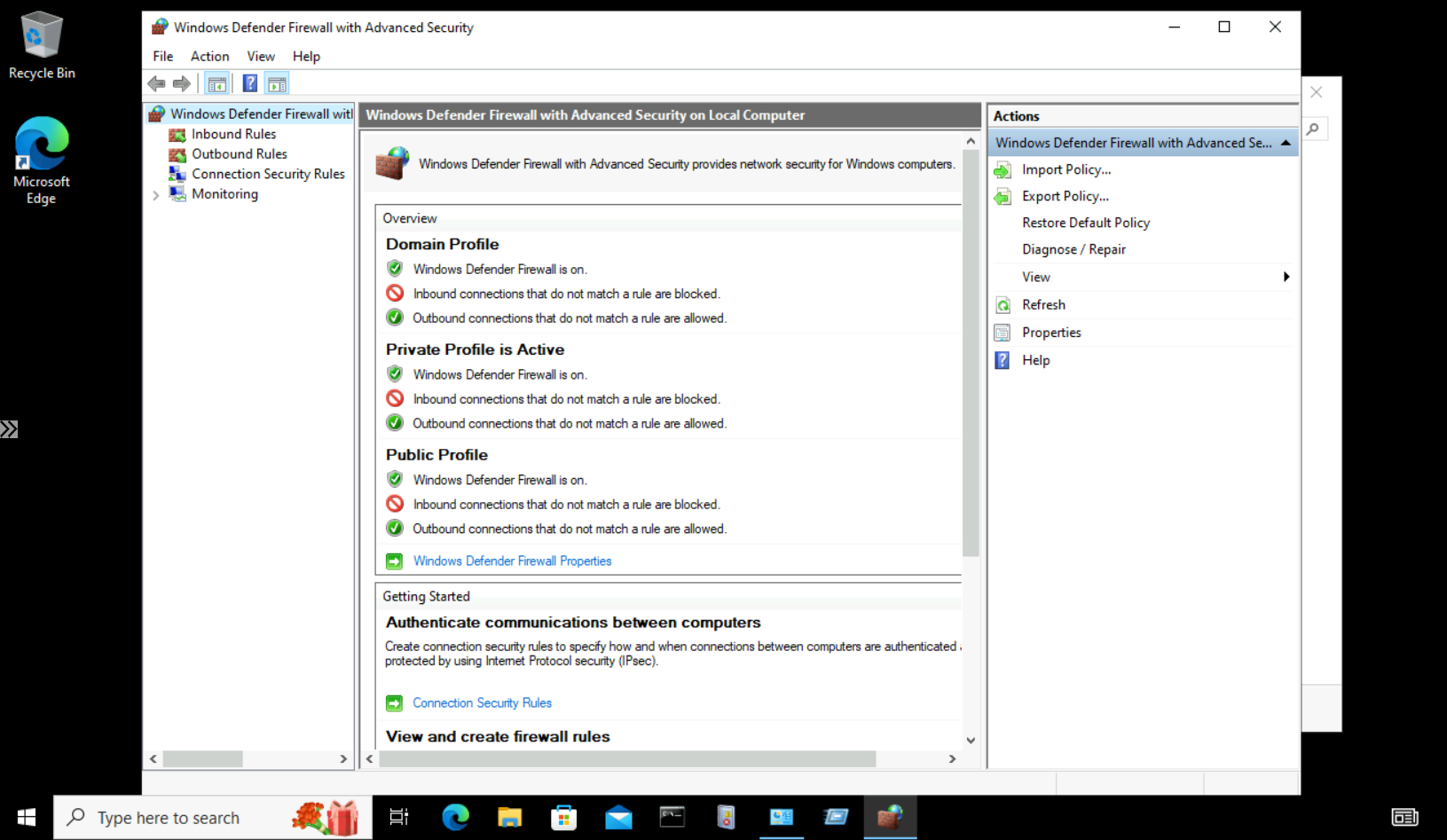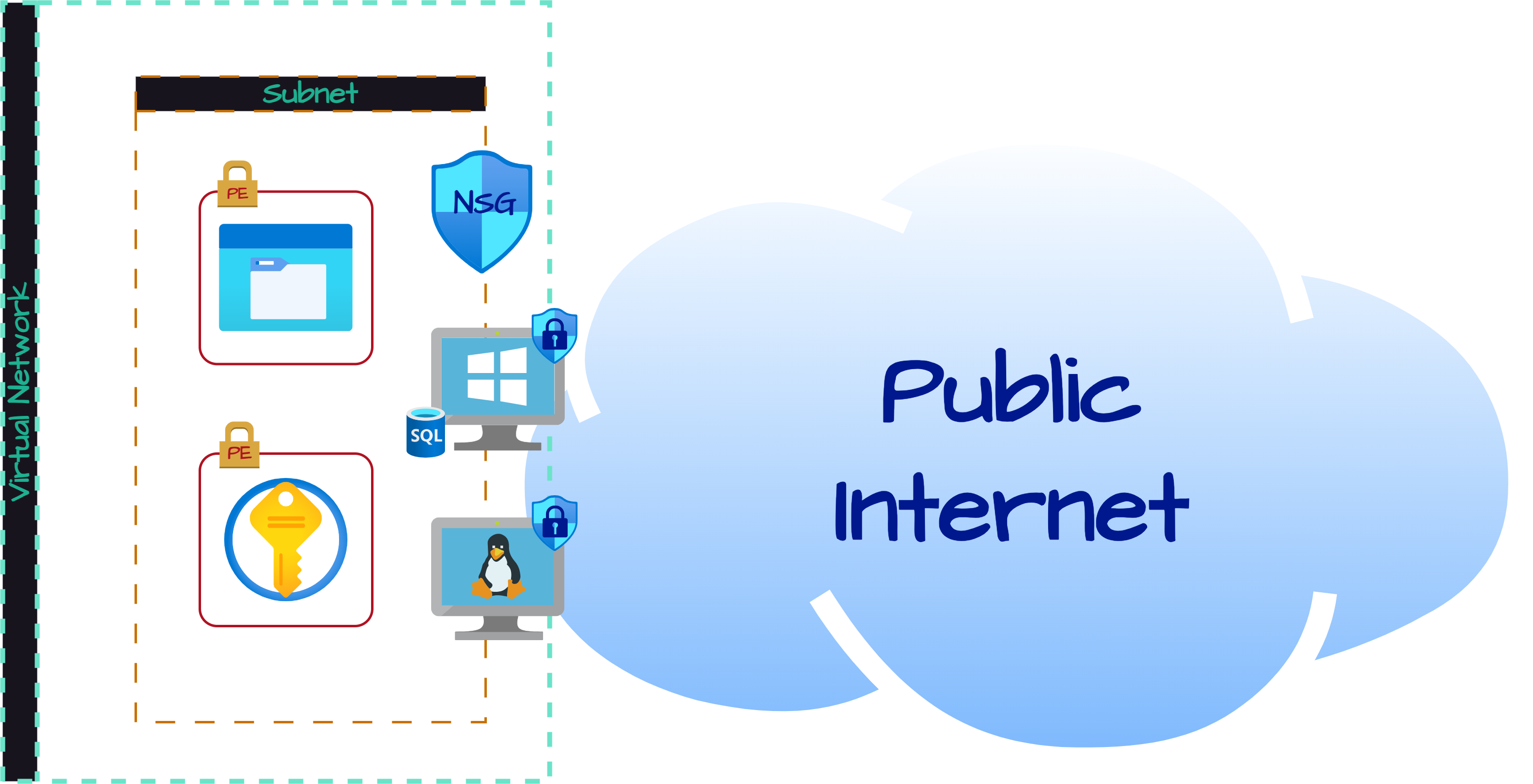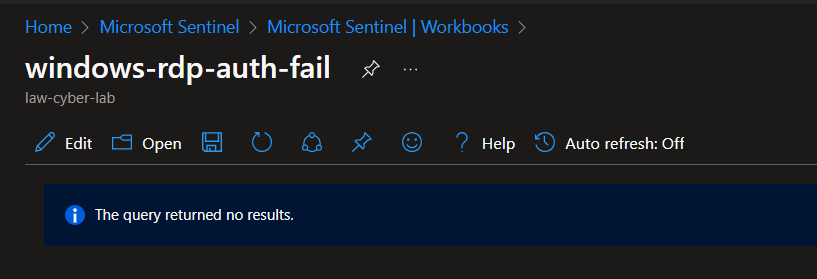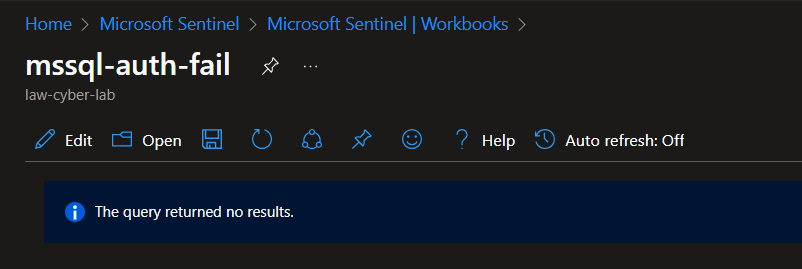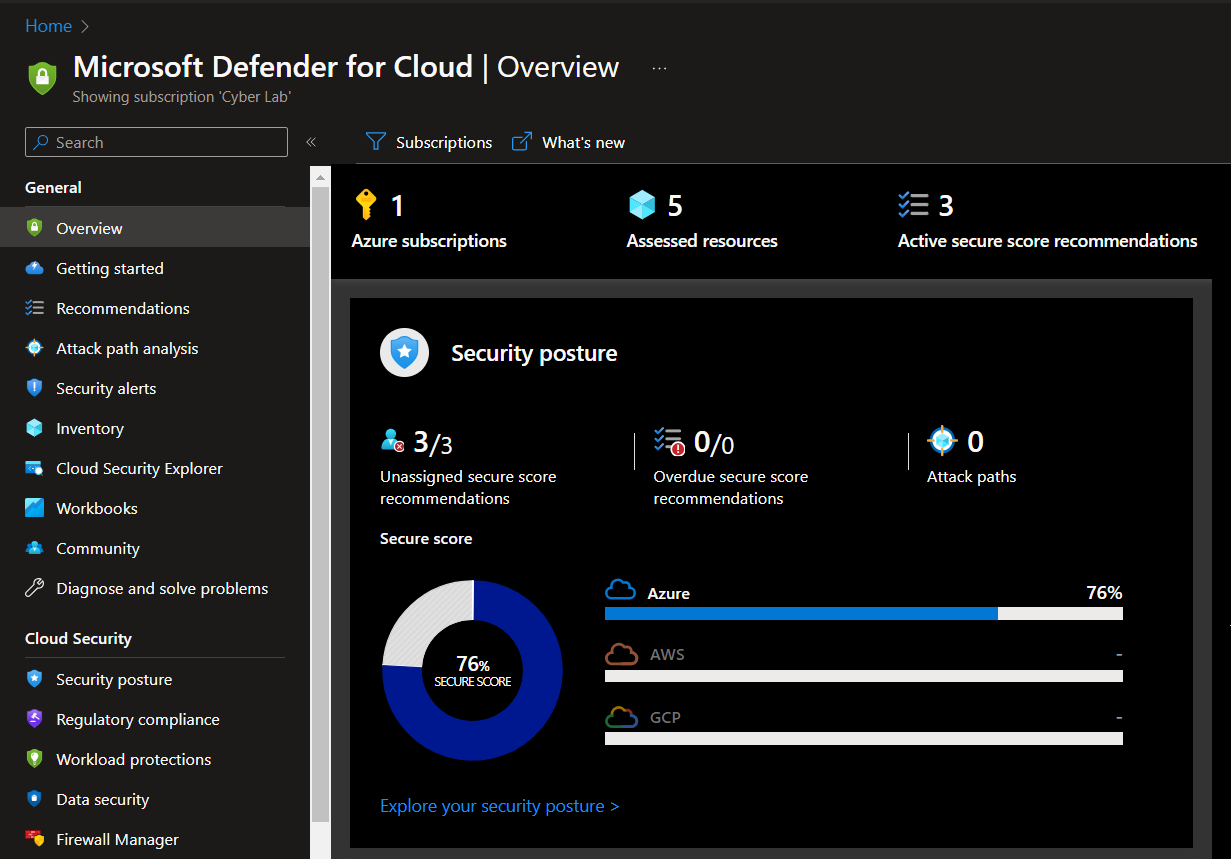Stage IV - Secure Cloud Configuration
Current network topology (via Network Watcher) before securing the environment
Implementing Security Controls
The MDC Security Score for the environment before hardening the environment:
Recommendations:
Enabling Regulatory Compliance (NIST 800-53) in MDC
Adding NIST 800-53: Security and Privacy Controls for Information Systems and Organizations to Microsoft Defender for Cloud. Full Publication.
To add NIST 800-53, from the MDC home page click Regulatory Compliance from the left blade > Manage compliance policies
Select the environment scope you want to add the regulations to, I'm adding at the subscription level.
Security Policies > Toogle NIST 800-53 Rev 5
It takes some time for the policy to add, after several hours it should appear in your MDC, under Regulatory Compliance
Implementing NIST 800-53 SC-7 Boundary Protection
Overview of System and Communications Protection, Section 7: Boundary Protection in MDC
Currently, our storage account, key vault and virtual machines are on the public internet - and that's bad. To fix this we're going to apply a network security group to the environment at the subnet level. We're also going to enable private endpoints and firewalls on the storage account and the key vault to disable access from the public internet and make them accessible only from the (new) subnet.
Enable Firewall on Azure Key Vault
AKV > Networking > Firewalls and virtual networks > Disable public access > Apply
Enable Private Endpoint on Azure Key Vault
AKV > Networking > Private endpoint connections > Create
Make sure the endpoint is in the same region as the other resources
Enable Firewall on Azure Storage Account
Storage Account > Networking > Firewalls and virtual networks > Public network access > Disabled > Save
Check endpoint creation in Windows VM
Resolves to private IP
Enable Private Endpoint on Azure Storage Account
Storage Account > Networking > Private endpoint connections > Private endpoint
Check endpoint creation in Windows VM
Resolves to private IP. You can see both AKV and SA are on the same network as the Windows VM.
Update Network Security Group Configuration
Create a network security group and attach to our subnet. It won't have any rules, but it satisfies the NIST 800-53 requirement to have a NSG attached to our subnet.
To attach to our subnet, Virtual Networks > Select Network > Subnets > Select Subnet > Select NSG > Save
Update VM NSGs
Update the VM NSGs to remove rules exposing them to the public internet and add a rule only allowing traffic from your IP address(es)
windows-vm-nsg
linux-vm-nsg
Turn on Windows VM Firewall
This may be redundant given the NSG change, but just in case.
I also applied available updates to the VM.
Architecture After Hardening / Security Controls
Attack Maps After Hardening / Security Controls
All map queries returned no results due to no instances of malicious activity for the 24-hour period after hardening.
NSG Allowed Malicious Inbound Flows
Linux SSH Authentication Failures
Windows RDP/SMB Authentication Failures
MS SQL Server Authentication Failures
Metrics After Hardening
To collect the metrics for the secured environment, Network Security Groups were hardened by blocking ALL traffic (with the exception of my workstation), and built-in firewalls enabled. Azure Key Vault and Storage Container were protected by disabling access to public endpoints and replacing them with private endpoints.
The following table shows the measurements taken after applying the security controls the environment and observing for another 24 hours:
Start Time: 1/26/2024 19:10:14
Stop Time: 1/27/2024 19:10:14
| Metric | Count |
|---|---|
| Security Events (Windows VMs) | 11024 |
| Syslog (Linux VMs) | 1 |
| SecurityAlert (Microsoft Defender for Cloud) | 0 |
| SecurityIncident (Sentinel Incidents) | 0 |
| NSG Inbound Malicious Flows Allowed | 0 |
Impact of Security Controls
| Metric | Change post-hardening |
|---|---|
| SecurityEvent (Windows VMs) | -61.99% |
| Syslog (Linux VMs) | -99.99% |
| SecurityAlert (Microsoft Defender for Cloud) | -100.00% |
| SecurityIncident (Sentinel Incidents) | -100.00% |
| NSG Inbound Malicious Flows Allowed | -100.00% |
MDC Security Score after Hardening
Since this was a lab, I did not address every recommendation in Microsoft Defender for Cloud, but just a a few under SC-7 as a proof of concept. The MDC Security Score for the environment after hardening the environment:
